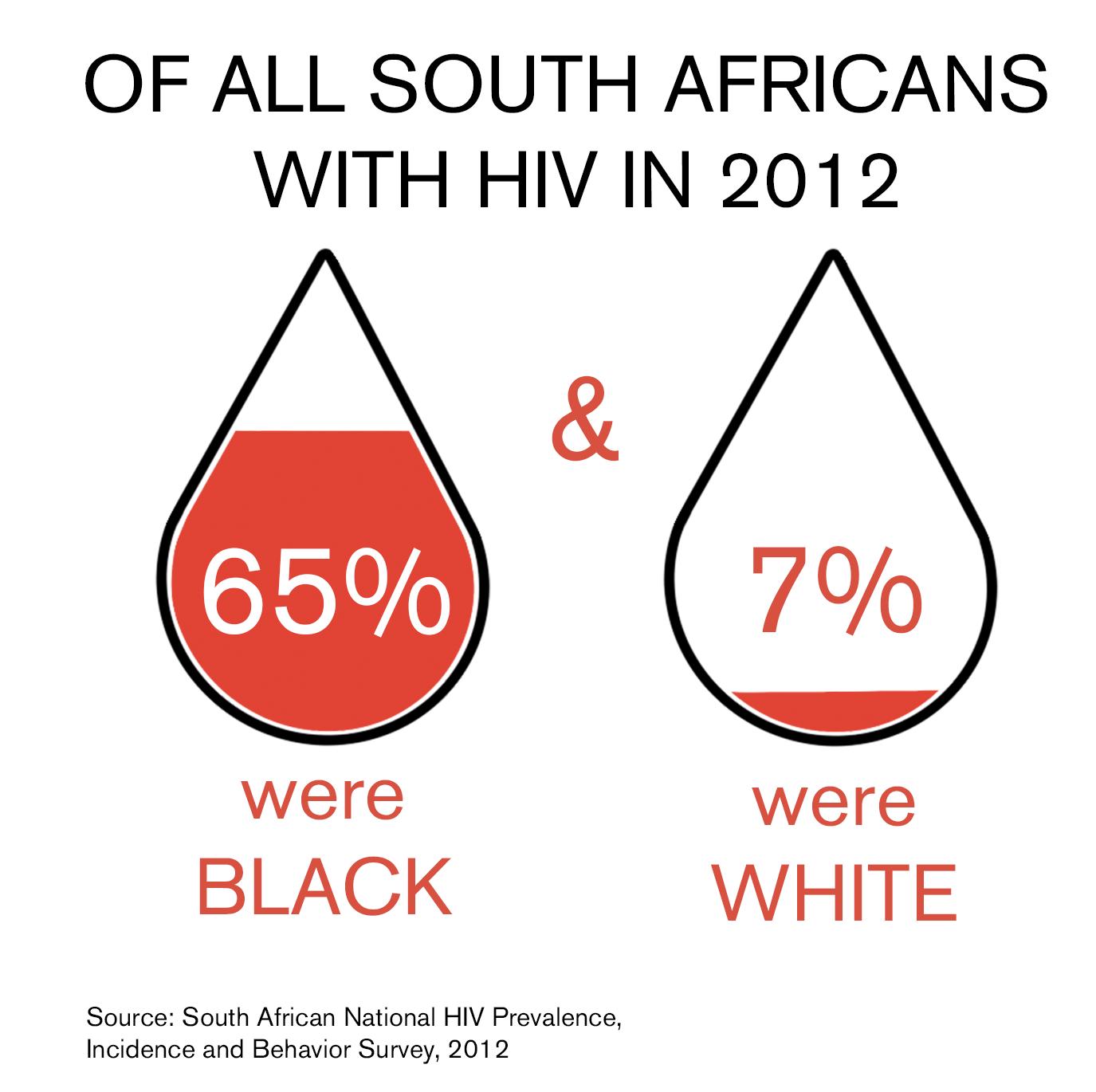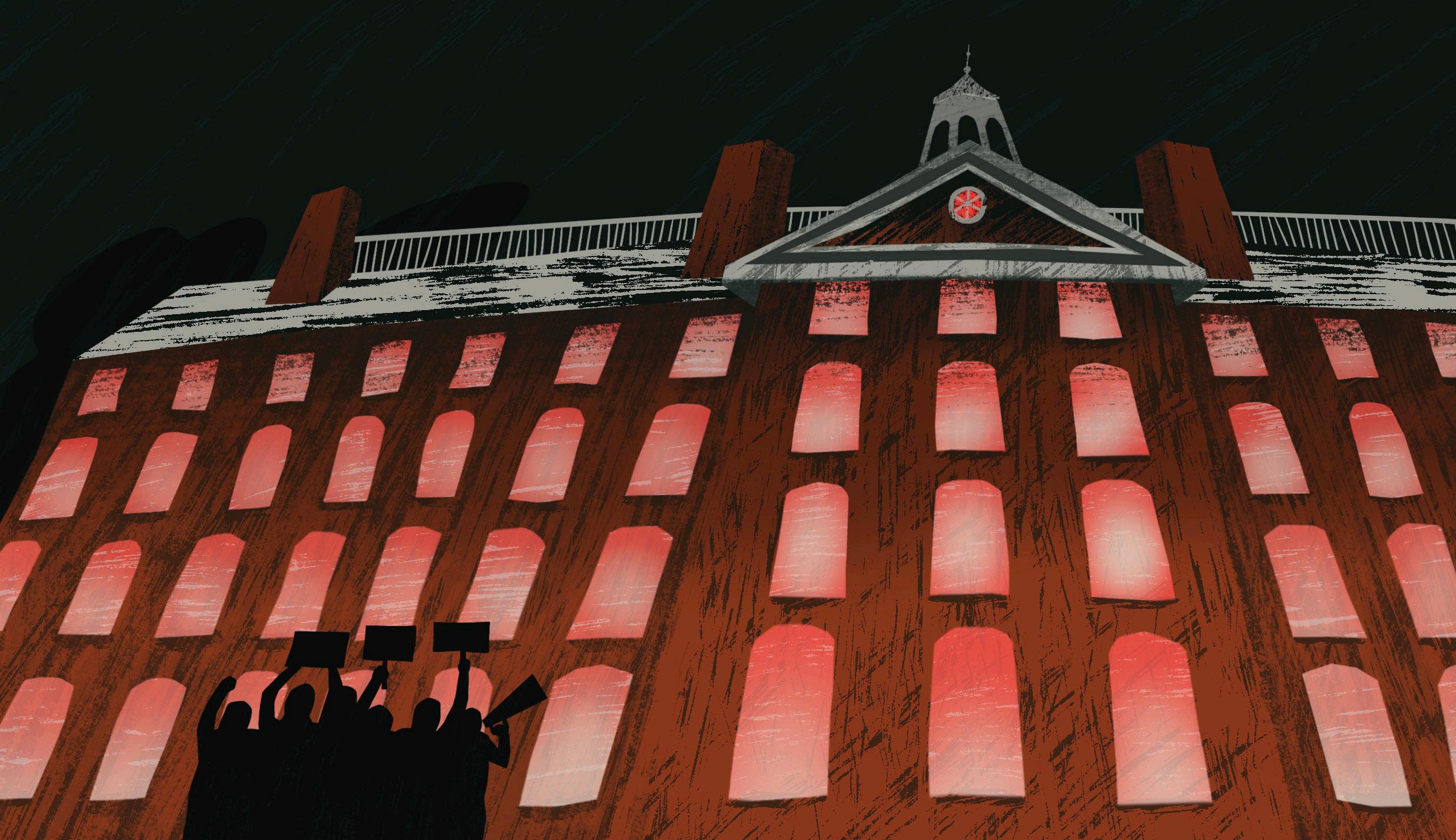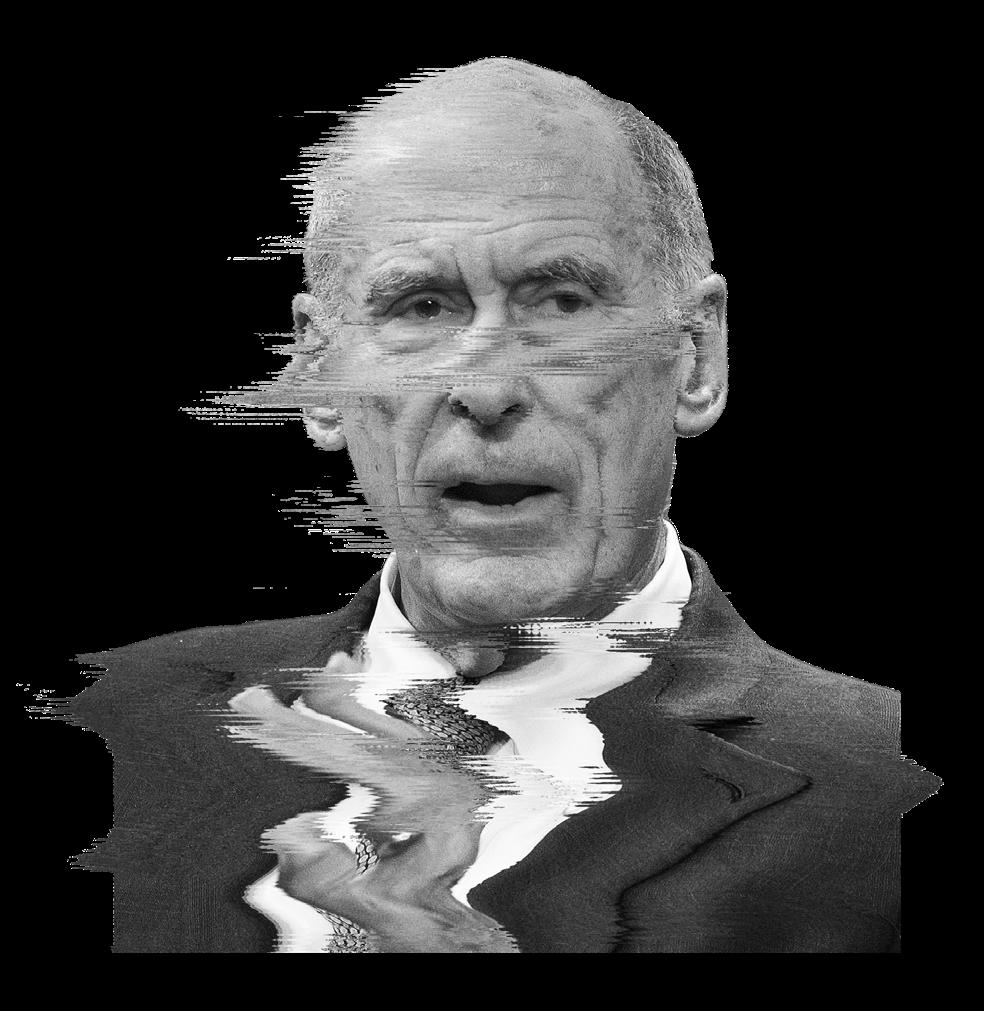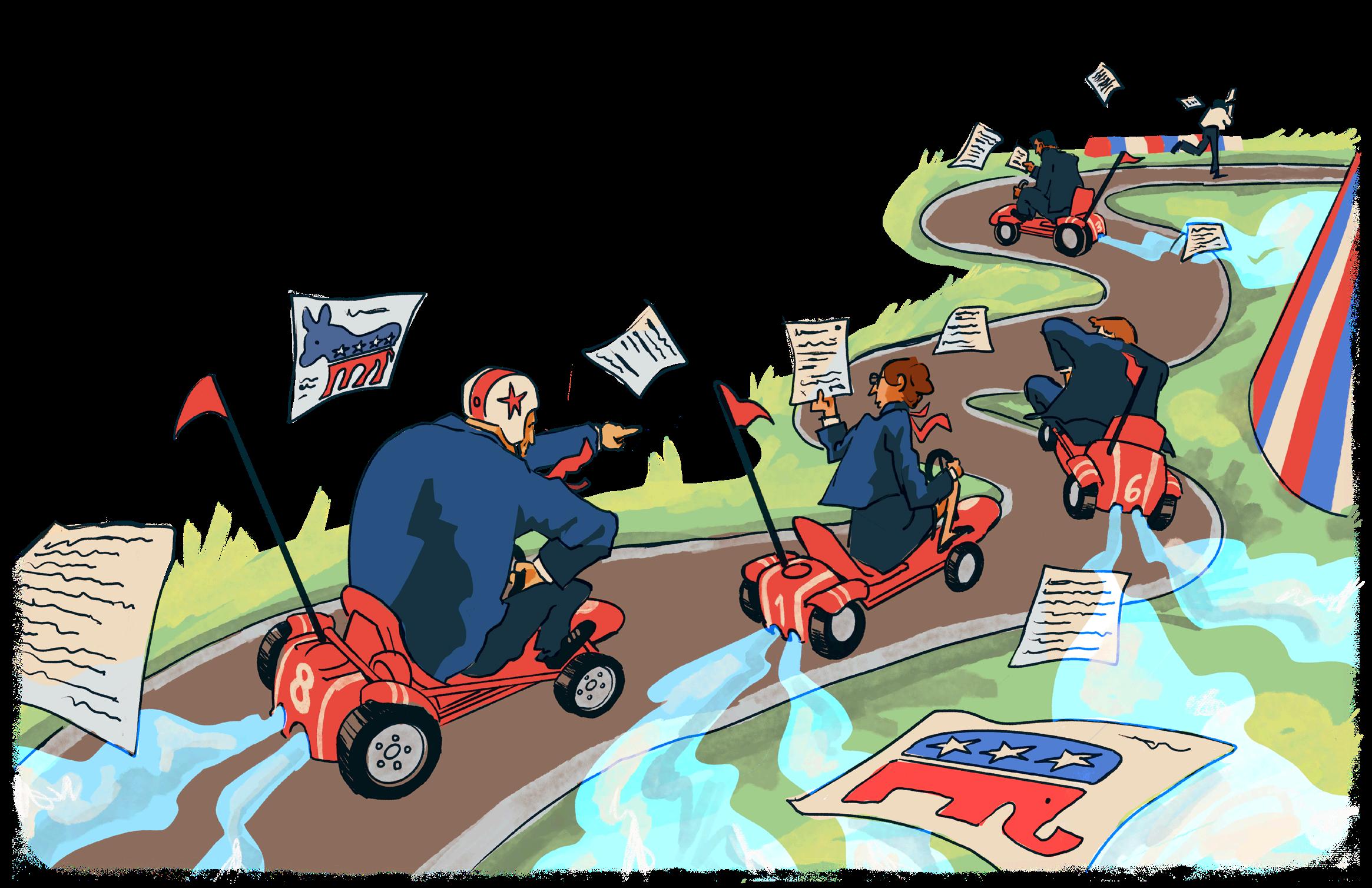SPECIAL FEATURE CORRUPTION


 FALL 2022 ISSUE 02
FALL 2022 ISSUE 02

SPECIAL FEATURE CORRUPTION


 FALL 2022 ISSUE 02
FALL 2022 ISSUE 02
There is a written record of corruption dating back to before 3,000 BCE in Ancient Egypt, according to some archaeologists. But corruption—most generally defined as the abuse of entrusted power for personal gain—has probably existed for as long as there has been power to exploit. Fast-forward 5,000 years, and corruption still pervades. The World Bank estimates that internationally, $1.5 trillion are paid in bribes every year, accounting for roughly two percent of world GDP. By the World Bank’s own admission, this figure probably underestimates the actual extent of corruption: While a common stereotype of corruption involves largescale quid pro quos—think Providence’s own Buddy Cianci, who used the mayor’s office to solicit large bribes—countless dollars go toward small bribes to low-level bureaucrats. These types of bribes, because they are illegal, furtive, and often quite small, are near-impossible to measure.
The overwhelming majority of people believe that corruption is harmful regardless of its scale. By distorting competition, preventing efficient use of public funds, and discouraging investment, corruption is bad for economic growth. Corruption can also kill people;. It is not uncommon for politicians and bureaucrats to extract money intended for public investment, resulting in accident-prone infrastructure and under-equipped health care facilities.
The authors in this issue explore these dimensions of corruption, but also some of the less noticeable consequences. In her article, Antara Singh-Ghai describes how Russia’s state-sponsored doping and abuse of teenage figure skaters in the Olympics has degraded the sport internationally, harming competitors and the purity of the sport.
Corruption can also contribute to environmental degradation and displacement of indigenous peoples. Charles Alaimo shows how the Tanzanian government’s desire to profit from the sale of land to international tourism businesses has left many Masaai—the land’s native occupants—without homes.
Annika Reff explains that corruption even influences what we eat. By funding scientific studies that underplay the negative health effects of sugar and spending millions on lobbying Congress, the sugar industry—together with legislators and regulators prone to the industry’s influence—has made a high-sugar diet the norm in much of the United States.
While corruption is a serious political issue, Roni Wine shows how allegations of corruption can be misused, a problem perhaps most salient in Brazil. Former President Jair Bolsonaro rose to power in the wake of the imprisonment of his predecessor (and now current President) Luiz Inácio Lula da Silva. It turned out that the corruption charges were poorly substantiated and distorted by a Bolsonaro-aligned judge.
Lastly, Bryce Vist sounds the alarm about corruption in Ukraine. Regardless of the outcome of the war, the rebuilding effort will take hundreds of billions of dollars. Ukraine and its international donors must confront the country’s history of graft, ensuring that funds for rebuilding do not simply line the pockets of oligarchs and well-connected politicians.
We hope this Special Feature shows you some unique harms corruption can cause, and perhaps motivate you to think about how corruption affects your community, your country, or even your daily life.
Gabe and MattEDITORS IN CHIEF
Gabe Merkel
Matt Walsh
CHIEFS OF STAFF
Casey Chan
Sarah Roberts
CHIEF OPERATING OFFICERS
Daniel Halpert
Gidget Rosen
SENIOR MANAGING
MAGAZINE EDITOR
Nathan Swidler
MANAGING
WEB EDITORS
Chaelin Jung
Morgan McCordick
Mathilda Silbiger
CHIEF COPY EDITORS
Robert Daly
William Lake
INTERVIEWS DIRECTORS
Alex Fasseas
Miles Munkacy
DATA DIRECTORS
Zoey Katzive
Arthi Ranganathan
BUSINESS DIRECTORS
Daniel Halpert
Gidget Rosen
CREATIVE DIRECTORS
Daniel Navratil
Christine Wang
MULTIMEDIA DIRECTOR
Elijah Dahunsi
LEAD WEB DEVELOPER
Sarah Roberts
SENIOR MANAGING
MAGAZINE EDITOR
Nathan Swidler
MANAGING EDITORS
Alexandra Mork
Joseph Safer-Bakal
Ye Chan Song
ASSOCIATE EDITORS
Grace Chaikin
Harry Flores
Isabel Greider
Lauren Griffiths
Justen Joffe
Caroline Parente
David Pinto
Cole Powell
Bianca Rosen
Antara Singh-Ghai
Bryce Vist
Archer Zureich
MANAGING
WEB EDITORS
Chaelin Jung
Morgan McCordick
Mathilda Silbiger
SE NIOR EDITORS
Natalia Ibarra
Sarah McGrath
Isabella Yepes
EDITORS
Ben Ackerman
William Forys
Jillian Lederman
Alex Lee
Matthew Lichtblau
Kara McAndrew
Francisca Saldivar
Isaac Slevin
Jack Tajmajer
ACTIVISM SECTION EDITORS
Sofia Barnett
Amanda Page
Gabby Smith
STAFF WRITERS
Ilektra Bampicha-Ninou
Anna Brent Levenstein
STAFF WRITERS CONT.
McConnell Bristol
Morgan Dethlefsen
Neve Diaz Carr
Henry Ding
Juliet Fang
Amina Fayaz
Michael Farrell-Rosen
Sophie Forstner
Isabella Garo
Oamiya Haque
Ashton Higgins
Katie Jain
Elsa Lehrer
William Loughridge
Bruna Melo
Christina Miles
Alexandra Mork
Kayla Morrison
Rohan Pankaj
Annika Reff
Andreas Rivera Young
Jodi Robinson
Bianca Rosen
Mira Rudensky
Ellie Silverman
Elliot Smith
Ian Stettner
Peter Swope
Maddock Thomas
Man Hei Christopher Wai
Jesse Ward
Ben Youngwood
Sofie Zeruto
Suzie Zhang
CHIEF COPY EDITOR
Robert Daly
William Lake
MANAGING COPY EDITORS
Andrew Berzolla
Isabel Greider
COPY EDITORS
Emily Colon
James Dallape
Khalil Desai
Mira Echambadi
Juri Kang
Connor Kraska
Caleb Lazar
Dorothea Omerovic
Jimena Rascon
Lilly Roth-Shapiro
Roza Spencer
Audrey Taylor
Sabina Topol
Hao Wen
Logan Wojcik
Ivy Zhuang
CREATIVE DIRECTORS
Daniel Navratil
Christine Wang
DESIGN DIRECTORS
Erin Isla Roman
Hope Wisor
GRAPHIC DESIGNERS
Muhaddisa Ali
Patrick Farrell
Youjin (Amy) Lim
Kara Park
Alina Spatz
Ivy (Airu) Zhang
Tina Zhou
ART DIRECTORS
Rosie Dinsmore
Jacob Gong
Lucia Li
Anahis Luna
Lana Wang
Kelly Zhou
DATA DIRECTOR
Zoey Katzive
Arthi Ranganathan
DATA DESIGN DIRECTOR
Lucia Li
DATA ASSOCIATES
Veer Arora
Carson Bauer
Ashley Cai
Allie Chandler
Elsa Choi-Hausman
Khalil Desai
Ryan Doherty
Raima Islam
INTERVIEWS DIRECTORS
Alex Fasseas
Miles Munkacy
DEPUTY INTERVIEWS DIRECTORS
Mira Mehta
Samuel Trachtenberg
Alexandra Vitkin
INTERVIEWS ASSOCIATES
Ahad Bashir
Carson Bauer
Omri Bergner-Phillips
Allie Chandler
Léo Corzo-Clark
Elise Curtin
Elijah Dahunsi
Alexander Delaney
Mira Echambadi
Ava Eisendrath
John Fullerton
James Hardy
Alice Jo
John Kelley
Stella Kleinman
Sam Kolitch
Seungje (Felix) Lee
Alexandra Lehman
Alyssa Merritt
Lauren Muhs
Hai Ning Ng
Matteo Papadopoulos
Maya Rackoff
Anushka Srivastava
Emma Stroupe
Anik Willig
Hiram Valladares Castro-Lopez
Yuliya Velhan
Tucker Wilke
Asher Labovich
Nicole Lugo
Javier Niño-Sears
Colby Porter
Logan Rabe
Francisca Saldivar
Jakob Siden
Giang Thai
Zhou (Harry) Yang
Yifan (Titi) Zhang
DATA DESIGNERS
Icy Liang
Hannah Jeong
Mahnoor Rafi
MULTIMEDIA DIRECTOR
Elijah Dahunsi
MULTIMEDIA ASSOCIATES
Ilektra Bampicha-Ninou
Garv Gaur
Ashton Higgins
Julia Kostin
Haotian Luo
Daniel Ma
Ruairi Mullin
Taha Siddiqui
Michael Seoane
Jonathan Zhang
COVER ARTIST
Iris Xie
ILLUSTRATORS
Jason Aragon
Ashley Castaneda
Naya Chang
Jocelyn Chu
Kyla Dang
Thomas Dimayuga
Nicholas Edwards
Pauline Han
Maria Hahne
Grace Li
Elizabeth Long
Wenqing (Ash) Ma
Temilola Matanmi
Rosalia Mejia
Kennice Pan
Ji Hu Park
Shreya Patel
Kira Saks
Evelyn Tan
Ayca Tuzer
Madison Tom
Rachel Zhu
BUSINESS DIRECTOR
Meghan Murphy
ASSOCIATE BUSINESS DIRECTORS
Charlie Key
Gidget Rosen
BUSINESS ASSOCIATES
Charles Adams
Rachel Blumenstein
Cannon Caspar
Stefanie Del Rosario
Carys Douglas
Peter Edelstein
Jake Garfinkle
Ellyse Givens
Nadeen Kablawi
Stella Kleinman
Matias Meier
Michael Obiomah
Nicolas Pereira-Arias
Martin Pohlen
Arthi Ranganathan
Alexandra Rubinstein
Last year, 16-year-old James Bascoe-Smith was stabbed near his home in south London. From his wheelchair, Bascoe-Smith testified at the Old Bailey court about his life-altering injuries. The jury was told his attack may have been provoked by an online drill video, making him an “innocent bystander” in a raging gang war. Fortunately, he did not join the list of 30 teen homicide victims in London in 2021—a record figure. The story of Bascoe-Smith is a tragic but all too common one. Every week opens a new wound in the hot-button issue of knife crime and drill music in the capital of the UK. Like all ‘chicken or the egg’ questions, the presence of a causal connection between drill and crime is debated. Regardless of the answer, music censorship is a misguided solution to London’s knife crime epidemic.
Music has always sparked moral outrage. In the 1960s, rock was denounced as a radical, unchristian influence on America’s youth. The War on Rock reignited in 1999 when the Columbine High School massacre spurred a conservative reaction against metal and goth music. Over the years, similar accusations of glamorizing drugs, sex, and violence were echoed against gangsta rap and hip-hop. In 2017, Fox News reporter Geraldo Rivera famously claimed, “Hip-hop has
done more damage to young African Americans than racism.” And just last summer, lyrics written by rappers Young Thug and Gunna were used to indict them on racketeering charges. Meanwhile, House representatives debated proposals to render song lyrics inadmissible in court. In Britain today, a similar debate is being played out.
The new target of outrage is drill music, a subgenre of hip-hop originating in Chicago that has crossed the pond over the last decade. UK drill is defined by its ominous beats and raw portrayal of street life, which sometimes veers into graphic accounts of violence. The genre has been politicized in debates over knife crime—an “epidemic” that kills almost two Londoners a week. Unlike many topics of media coverage in the United Kingdom, both the conservative-leaning tabloid press (e.g. Daily Mail) and broadsheet “quality press” have engaged in fearmongering; in 2018, a widely-circulated Sunday Times article labelled drill “the ‘demonic’ music linked to rise in youth murders.” A controversial Policy Exchange report argued that over 25 percent of London gang murders are linked to drill, which the report alleges is a cause of revenge killing—a common theme in the style’s violent lyrics and the sometimes direct threats they communicate. In response, prominent criminologists signed an open letter dismissing the report as baseless and racially insensitive.
The debate has sent shockwaves across the fashion, music, and entertainment worlds. Brands like Adidas have come under fire for spon-

Censoring rap is no fix to London’s knife crime epidemic
soring convicted artists, as the sportswear giant launched an ad campaign with rapper Headie
One just months before his imprisonment for knife possession. Despite his major commercial success, Headie One remains entangled in an explosive north London gang war. While he maintains that drill is not the root cause of gang violence, other rappers have acknowledged the connection. Speaking on crime, drill rapper Incognito confessed, “You’ve got to put your hands up and say drill music does influence it.” Shortly after making these remarks, Incognito himself was stabbed to death. With the instant and viral reach of music videos, drill is a plausible accelerant to gang violence and may provide a commercial incentive for knife possession as a means of demonstrating authenticity to an online audience.
The potential connection between drill and knife crime does not make censorship the solution. The close partnership between London’s Metropolitan Police (Met) and YouTube is particularly troublesome. Since 2018, hundreds of drill videos have been removed at the request of the Met, which aims to “carry out ‘profiling on a large scale’” on males aged 15 to 21. This government intervention not only infringes on free speech and artistic license but also verges on racial profiling. Drill aside, when law enforcement agencies censor art to influence public discourse, they wade into dangerous territory. While drill has influenced some past acts of violence, the Met is ill-equipped to differentiate between
songs making genuine threats and those merely chronicling or dramatizing personal experience. Contemporary drill is a largely theatrical display that fabricates and plays into existing stereotypes to appeal to a substantially white audience. Most drill rappers have no connection to organized crime and merely leverage this image for commercial purposes. For a 92 percent white police force, the risks of “street illiteracy” and racial bias are especially salient when exercising sweeping powers of censorship.
Unlike gun crime in the United States, knife crime in the United Kingdom is a subject of bipartisan consensus; most agree it is a problem that needs addressing. Berated on soaring crime rates in the capital, Sadiq Khan has become the one of the most unpopular recent mayors of London. Unwise stopgap solutions include censoring drill music and expanding police stop-and-search authority. A better, more sensible approach treats knife crime as a public health problem. It would establish youth clubs in underserved areas, improve economic opportunity for London’s poorest, and implement prison reform to end the cycle of incarceration. Though drill has played some role in gang conflict, it is far from the root cause of the knife epidemic. A sensationalist press has dragged this problem to the forefront of a national culture war, distracting policymakers and the public from realistic solutions to knife crime. For this reason, we must drop the War on Drill.

“Like all ‘chicken or the egg’ questions, the presence of a causal connection between drill and crime is debated. Regardless of teh answer, music censorship is a misguided solution to London’s knife crime epidemic.”by

Ezra Klein is a New York Times opinion columnist and host of the podcast The Ezra Klein Show. Before moving to The Times, Klein co-founded the news site Vox, where he served as editor-in-chief. He is also the author of the book Why We’re Polarized, which examines the rise of political polarization in the United States.
Tucker Wilke (TW): I’ve seen a lot of people say, “All of this polarization we have now is because of Trump, and once he’s gone, we’ll go back to normal.” In your book Why We’re Polarized, you push back against this idea. How would you respond to the idea that polarization is gone in a post-Trump America?
Ezra Klein (EK): There’s an old Larry Summers paper that is sort of famous in the economics profession because it questions the idea of the rational economic agent. Its first line, famously, is “there are idiots. Look around,” and I would say, “there is polarization, look around.” Look at Covid-19, look how that is split.
I think that if anything, I underestimated the power of polarization. When I was writing my book, I would have said that a virus that kills at this point nearly a million






Americans would be the kind of thing that is so directly relevant to people’s lives that political polarization is not going to have much of an impact. It’s one thing to be polarized about abstract questions of policy that you don’t really understand: What’s gonna happen with climate change, or should China be branded a currency manipulator? But an illness that could get you sick and kill you, or your family members, or your neighbors, or your friends?
I would have thought that the incentive to get good information and act on it would’ve been pretty high, and I have been surprised by that.
TW: How did the pre-existing polarization in the United States impact people’s perceptions of the pandemic?
EK: I think a lot about a counterfactual Covid-19. Imagine that in 2012, Mitt Romney won the election. And in 2016, he won re-election. So when Covid-19 comes, we are toward the end of his second term with a Republican president who is an empirical, conscientious, mask-wearing type of guy, no matter what you think of his positions on taxes and entitlements. Does Covid-19 polarize the way it did? Does it polarize equally but differently than it did? Do you have more of a liberal reaction against things like vaccines?
Go back a couple of years in the vaccine debate, and the view is that it’s weirdos in California who won’t get their kids vaccinated for measles who are putting everybody at risk. I remember covering that for a bit. That obviously isn’t what the central driver turns out to be during Covid-19 over vaccine skepticism. So it’s very hard for me to know how much of what we’ve seen reflects idiosyncratic dimensions of Donald Trump’s response and public persona and personal tendencies, as opposed to some kind of inevitable interplay of political coalitions and psychologies.
TW: On the topic of Trump, how do you think his rather extreme brand of polarization affected the response to the pandemic?
EK: So one fun, constant question about Trump is, “is he a symptom or a cause?” And he’s obviously both. But one trend behind polarization that he reflects and accelerates is the clustering of conspiratorial, low-trust people in the Republican Party, and Donald Trump himself is one of these people. He is a guy who, way before his political career, was constantly trafficking in conspiracy theories and all sorts of weird stuff. He is clearly not a person who trusts institutions or believes in their value. He is authentic to the Republican Party that is emerging, so when he runs, he resonates with so many Republican voters. And when he becomes the nominee, more low-trust people join the Republican Party.

And I bring that up to say that a Republican Party that has become structurally mistrustful of institutions—full of people who will disbelieve something the media says because it is the media that said it—is a party that is not well set up for Covid-19 and similar situations. At certain, critical moments, you do need to believe things that you take on faith from people who’ve run experiments in labs. And the fact that the United States polarized
around conspiratorial thinking did not set us up well for a Covid-19 response.
Omri Bergner-Phillips (OBP): A lot of that conspiratorial thinking seems to be spreading over social media. How do you think social media intersects with polarization? If you had the power to do so, how would you adjust social media platforms to help decrease polarization?
EK: It’s worth saying the enormous bulk of the rise in polarization long predates social media. Polarization is not a social media phenomenon, though I think social media is making it worse. But social media, too, is responding to a long structural change in American political life.
I would re-tune the algorithms to have a circuit breaklike tendency as things begin to go viral. One of the ways social media is changing politics is by ratcheting up the emotional tenor. It supplies you with content to feel strongly about. In some areas, that means the content is funny. In politics, it means the content makes you very angry.



And we get a lot of it. Instead of social media hungrily searching out things that will go viral, I would like it to not do that. I don’t think it’s good to live our lives with this level of hyperstimulation. I think this is true in areas outside of politics, too. But within politics, it would be better if the algorithms preferred things that were getting a modest response from the people who read them. Rather than preferring everything that was getting a super strong response.
OBP: Given how social media exploits the personal side of politics, what spaces do you prefer for talking about issues that are important to you, such as veganism or reproductive rights?
EK: I primarily talk about both of the things you’re mentioning in podcasting. I almost never talk about those issues on social media.
I don’t think abortion is something to debate. I personally don’t think I’m likely to make the world better by talking about abortion, or the death penalty, or veganism on Twitter. I don’t think I’m going to create a constructive space of reconsideration. On my podcast, I think I’m able to build a relationship with the audience over long periods of time. When I say something that’s a little unusual or that’s outside the way they naturally view the world, they might be willing to venture with me there.
I value places where you can be a more whole person— podcasting being one of them, but not the only one—or places that lend themselves to a healthier form of politics. I think if you can see me in my deeper humanity, you might be more willing to listen to what I’m saying. And if you feel that I’m seeing you, you might be more willing to tell me what you’re truly thinking. That’s a precondition for any kind of persuasion in either direction.
*This interview has been edited for length and clarity.
“Polarization is not a social media phenomenon, though I think social media is making it worse.”
to deceitfully obtain property deeds that deprive indigenous communities of their ancestral lands. But by working with non-governmental organizations and increasing oversight, South American governments can curb this continued land theft.
Although digital registries are relatively new, the ethos underlying their exploitative use is not. During the colonial period, debates over land registration and ownership in South America were often at the forefront of violent conflicts between European colonizers and the indigenous groups they displaced. Since then, land-grabbers have capitalized on the general lack of centralized land registration systems and regulatory policies to claim ownership of community-owned lands without legal deeds.
Brazil’s Cerrado region, the most biodiverse savannah in the world, is home to the geraizeiros, a population of mixed Afro-Indigenous and European descent. Since their arrival in western Bahia over 200 years ago, the geraizeiros have lived in small villages in the savannah lowlands (baixões) and the plateaus (chapadas), cultivating the land with care and respect.
However, because many geraizeiros lack official deeds to the lands they live and work on, companies have recently been able to expand into the region and kick them off of the land they have occupied for decades. These companies laid claim to vast swaths of uncultivated

land in the Cerrado before converting the native vegetation to soy, corn, and cotton monocultures. The Teachers Insurance and Annuity Association of America alone has acquired at least 800,000 acres of farmland in Brazil, primarily in the Cerrado region. These aggressive business practices have severely impacted the geraizeiros, leaving most of them displaced and disconnected from their ancestral lands.
Sadly, the story of the geraizeiros is not unique: Native communities across South America have faced similar fates. In recent years, many countries in South America have digitized their land registries and established online databases that serve as birth certificates for rural properties. While land registries are not inherently harmful, mega-agribusiness corporations such as Cargill and Archer-Daniels-Midland use these registries as well as georeferencing technologies
In 2020, GRAIN, a small international non-profit supporting small farmers and community-controlled food systems, launched an investigation into how these new digital systems function. In its report, GRAIN argues that in several areas of rapid agribusiness expansion in South America, the digital system is “validating the historic process of land grabs.” Rather than recognizing the long-standing land claims of traditional communities, the report alleges, the system is expelling native communities from ancestral lands that they have occupied for decades, or in some cases centuries. Affected communities live in regions including the Llanos Orientales of Colombia, four states in the Brazilian Cerrado ecoregion, and three areas along the Paraná River.
Within each of these regions, landowners are required to register their land in what is formally known as a georeferenced cadastre—a supposedly exhaustive record of a given country’s property—if they wish to acquire the legal land deed, bank credits, and loans. Since the World Bank partially funds the cadastre process in many South American countries, georeferencing tools allow the international financial sector to play a decisive and expanding role in converting community-held rainforests and savannahs into agribusiness land. In Brazil, for
How georeferencing technology has been used to steal indigenous territory
example, the World Bank shelled out $45.5 million for the digital registration of private rural properties in the country’s rural environmental cadastre, allowing it to generate income from investments in agroforestry systems.
Unsurprisingly, this outsourcing of power and authority has had dire consequences for many indigenous communities. The cadastre system caters to the needs of large companies and private actors who want to register individually owned allotments of land. The bureaucracy of cadastral documentation, coupled with the rigidity of the cadastre system’s definition of land ownership, makes it difficult for some native communities—many of whom collectively occupy their land—to register their plots. Cadastres’ early iterations fail to record land occupation by these communities, making them “illegal trespassers” on the property they work and live on. The new landowners can then use the official cadastre and georeferencing records to go to court and evict traditional communal owners. Condoned by the rampant corruption in rural municipalities and courts, this sequence is disturbingly common.
Although much of this problem stems from misuse of georeferencing technology, the issue calls for a political solution. Local and national governments must put agrarian reform and collective land ownership issues on their political agendas. Governmental land use groups and agencies—the South American equivalents to the United States Bureau of Land Management—should allocate public lands to rural peoples in order to guarantee their collective territorial rights. Digital georeferencing

techniques for land demarcation can and must be backed up by traditional ground truthing surveys. And rather than taking prospective landowners’ claims at face value, governments must independently verify them via a centralized land registration system organized to resolve conflicts.
Even if the government does not act, there are still a number of ways to guarantee land rights for indigenous communities and other rural peoples.
In 2019, the International Land Coalition (ILC) published “ILC Toolkit #9: Effective Actions Against Land Grabbing,” describing several strategies that landowners and activists alike can use to combat the global land-grabbing phenomenon. One of the primary ways the ILC encourages local groups to resist land-grabbing is through the development of community land registries, which allow landowners to register their customary land rights into a government cadastre and obtain formal land titles or certificates. This process helps integrate many indigenous peoples’ customary rights into the legal system and establishes proper land rights that help communities protect their lands.

The Higaonon, an indigenous tribe in the Mindanao region of the Philippines, has successfully implemented this practice and holds
much of its land under customary tenure systems. Still, the lack of clear boundaries between neighboring groups has led to many disputes. In response, the Higaonon applied for a Certificate of Ancestral Domain Title (CADT), a formal land ownership title. However, despite their efforts, the National Commission on Indigenous Peoples has only formally registered 50 CADTs, limiting their effectiveness in protecting indigenous land.
Traditional knowledge and production systems—existing sustainably on communally held land—protect natural resources and are vital for human survival. But the longevity and viability of these systems are being put at risk by the “digital land grab.” We must do everything in our power to stop it.
“The bureaucracy of cadastral documentation, coupled with the rigidity of the cadastre system’s definition of land ownership, makes it difficult for some native communities—many of whom collectively occupy their land—to register their plots.”
The South African government has a longstanding history of HIV denialism. Throughout his presidency from 1999 to 2008, Thabo Mbeki continually questioned the validity of HIV research. Infamously, he presented his dissenting positions in a letter to world leaders in 2000. In speeches that same year, he stated, “A virus cannot cause a syndrome. A virus can cause a disease, and AIDS is not a disease, it is a syndrome.” In addition to this rhetoric, Mbeki sponsored panels that highlighted dissenters from current HIV research, furthering his pseudoscientific views. As a result, HIV conspiracy theories became rampant in South African political life. Mbeki’s claims were met with immediate backlash from media outlets, AIDS activists, and healthcare organizations. However, these responses disregard the South African historical context. The legacies of apartheid, corruption, and colonialism that linger in the South African collective consciousness provided the perfect climate for conspiracy theories around HIV/ AIDS to proliferate.
In South Africa, public health and systemic oppression have been intertwined for over a century, with the racial segregation of healthcare codified by the 1883 Public Health Act. Under this act’s emergency provisions, Black South Africans were removed from urban centers during flare-ups of the Bubonic Plague. Between 1900 and 1910, this policy surrounding Plague epidemics resulted in the sweeping loss of property for Black South Africans. This period of racial segregation became impressed upon the national consciousness of South Africans. It was a time when racism was thinly veiled as public health policy.
In later years, fearful of anti-apartheid movements, the South African government
began investing in Project Coast, an operation within its chemical and biological warfare (CBW) department. Former military doctor Wouter Basson headed this project, modeling it on programs in other countries. Allegedly, this bolstering of the CBW department was originally intended to combat chemical weapons threats during the South African conflict in Angola. Testimonies from the Truth and Reconciliation Commission (TRC) hearings, however, uncovered it to be an effort to possibly commit genocide against the Black population.
Researchers attempted to create a bacterium to target Black individuals. Additionally, Basson’s team investigated how CBW such as cholera and micro-organisms could be deployed for population control. One of the most terrifying projects included a vaccine to covertly sterilize the Black population. This effort became extremely explicit during the TRC hearings, in which one doctor stated that their “final brief, [...] was to develop a product to curtail the birth rate of the Black population in the country.”
These genocidal plans coincided with the faulty AIDS response by the apartheid government throughout the 1980s and 1990s. As soon as AIDS began afflicting the Black population, the government response reflected the enduring racism in South Africa. The voices of rightwing parliament members offered an alarming prophecy of the destruction to come. Dr. F.H. Pauw claimed that the Black majority would no longer be a threat due to many dying of AIDS. Conservative Party MP Clive Derby-Lewis stated, “If AIDS stops black population growth, it would be like Father Christmas.” While the government eventually attempted to advocate for contraceptives, this only aggravated anti-apartheid groups and was seen as another method of reducing the Black population.
When Nelson Mandela was elected in 1994, his post-apartheid government inherited a public health system riddled with mistrust and an increasing number of people living with HIV. In fact, in 1994, 7.6 percent of South Africans were
The legacy of apartheid South Africa in addressing the HIV pandemic
“The legacies of apartheid, corruption, and colonialism that linger in the South African collective consciousness provided the perfect climate for conspiracy theories around HIV/AIDS to proliferate.”
HIV positive (compared to 0.7 percent in 1990). This figure would only keep growing, hitting 22.4 percent in 1999. South Africa’s crippled healthcare system needed to address this growing crisis, yet officials refused to acknowledge the results of HIV studies, slowing government interventions.

One of the biggest failures of Mandela’s new government was its refusal to properly use the antiretroviral drug azidothymidine (AZT), the primary treatment given to people living with HIV at the time. In other countries, AZT helped
address mother-to-child transmission during pregnancy. Scientific evidence highlighted that proper use of AZT—when taken in tandem with cesarean sections and formula feedings— results in a near-zero mother-to-child transmission rate. Still, Health Minister Nkosazana Clarice Dlamini-Zuma claimed otherwise, espousing the view that AZT was too expensive and ineffectively addressed the pandemic. Her successor echoed similar sentiments, arguing the drug’s benefits did not outweigh its toxicity. Dissenting from scientific evidence on antiretroviral drugs, the South African government failed to respond to the HIV crisis: A study from the Harvard School of Public Health estimated that more than 330,000 people died prematurely and 35,000 babies were born with preventable HIV infections. An antiretroviral treatment program was not implemented until 2003, three years after Mbeki’s troubling letter was presented.
Despite these obvious failures, they must be considered in the context of apartheid’s oppression. The legacies of a racist, morally bankrupt colonial government lent themselves to a poor response to the growing HIV crisis. This legacy helps explain why the government withheld the authorization of AZT. With the discovery of genocidal planning and anti-fertility research, the post-apartheid government was sensibly wary of drugs specifically marketed toward mothers. Coupled with the fact that Western pharmaceutical corporations were heavily pushing and profiting off of the drug, the government was extremely cautious of AZT in the post-apartheid era.
Mbeki was extremely hesitant to blindly accept wisdom from countries that participated in the oppression of his people. In his letter, he emphasized that prohibiting HIV dissent is “precisely the same thing that the racist apart-
heid tyranny we opposed did.” He also highlighted the unique nature of the African HIV crisis, a claim which some have misconstrued as stating that there existed a new African source of AIDS. Yet, the HIV crisis itself in South Africa— and other countries affected by colonialism—is unique. Many challenges come from grappling with the legacy of apartheid, which undoubtedly fractured the response from the onset. This begs the question: Can we really judge a leader for not trusting their oppressors?
Today, the legacy of apartheid continues to influence public health in South Africa. In 2020, South Africa had approximately 7.8 million people living with HIV, and around 19.1 percent of people ages 15 to 49 had tested positive for HIV.

South Africa has the fourth highest HIV prevalence rate and the greatest number of people living with HIV in the world, making it a pressing matter of consideration for global health.
This consideration became especially apparent once the Covid-19 pandemic struck, since HIV has left many South Africans immunocompromised. Coupled with low vaccination rates, South Africa and other sub-Saharan African countries were at high risk for Covid-19. This had a global impact: Some scholars believe that the Omicron variant originated in South Africa in part due to its sizable immunocompromised population, which put it at greater risk of mutations appearing.
While one cannot trace back every public health failure to apartheid governments, it is important to note the lasting legacies of oppression left by them. It forever changed the consciousness of South Africa, as the memories and trauma of apartheid have not been erased with transitions of power. This sentiment is not confined to South Africa, but rather, it is the case in every country with a deep oppressive history. Medical mistrust is especially pervasive among Black Americans due to systemically racist medical malpractice and a centuries-long legacy of chattel slavery. The Tuskegee Syphilis Study, while perhaps the most infamous, is only one example of a racist weaponization of science against the Black community. Similarly, many
indigenous populations also continue to distrust post-colonial medical establishments.
Every colonizing power must reflect on its weaponization of health, as they have colored the modern-day responses to public health crises. How can we expect people to “trust the science” if the source has an untrustworthy track record? While it is easier said than done, governments must invest time and resources into mending the wounds that they inflicted. Without addressing past atrocities, conspiracies will continue to run rampant, frustrating the global response to future health emergencies. As the world is hopefully on the tail end of the Covid19 pandemic, the present moment stresses the urgency of reconciling prior wrongdoings for the sake of the health of all eight billion people on the planet.
“Dissenting from scientific evidence on antiretroviral drugs, the South African government failed to respond to the HIV crisis: A study from the Harvard School of Public Health estimated that more than 330,000 people died prematurely and 35,000 babies were born with preventable HIV infections.”



Anik Willig (AW): What got you into the field of immigration law, and what did you witness as both an immigrant yourself and a lawyer that made you start Touching Land?

Carolina Rubio-MacWright (CRM): Growing up in a place that wasn’t safe, I felt like my body was always threatened. Since moving to the States, having freedom is a feeling that I carry with me. As a law student, I went down to the border with the Texas Civil Rights Project, and got to see and hear stories of other immigrants.
After law school, I started working at the public defender’s office and witnessed a lack of proper representation for immigrants. I was determined to practice immigration law and make sure that I could teach people what their rights were. Touching Land came about later in my career. I was already a resident in this country, and I started doing a lot of public ‘Know Your Rights’ workshops. I wanted to figure out how I could make these workshops less threatening and more of a relaxing environment. I wanted to do more somatic practice. Art became a form of documenting stories we cannot understand with words.
AW: What kinds of injustices did you witness while working at the public defender’s office and inside detention centers?
CRM: In the public defender’s office, a client was incarcerated for two years and had no access to sunlight. People told me, “This is a ridiculous right that you’re fighting for.” I think honoring people’s humanity, whether they’re in prison or not, is important.
In detention centers, we saw a lot of really horrible things that were severe violations of human rights. I think that it’s really hard to see a child unable to get a hug when they’re crying, or listen to a mom that is telling you about her sexual abuse experience. Why are we incarcer-
Carolina Rubio-MacWright is an artist, immigration lawyer, and activist fighting for immigration justice. An immigrant herself, Rubio-MacWright moved to the United States from Bogotá, Colombia at 20 years-old to escape violence. She graduated from Florida International University with a Bachelor of Fine Arts and moved to Oklahoma City where she received her J.D. She has served as an attorney in Miami, Oklahoma, and New York City and currently works in Brooklyn. Through her organization, Touching Land, she has developed ‘Know Your Rights’ workshops that empower immigrants with legal knowledge, and she continues to use experimental mediums, like clay and cooking, to stimulate conversation.
ating humans that are seeking help? That to me is unfathomable, and that’s why I organize groups to go down to these centers and be true agents of change.
AW: Could you talk a bit more about Touching Land and how it has brought a community of immigrants together?
CRM: Touching Land is a non-profit which includes the Empowerment and the Building Bridges programs. The Empowerment program brings together immigrants, both undocumented and documented. Immigrants come to a beautiful art studio in Brooklyn, which would otherwise be very expensive and inaccessible. For four weeks, we have classes on what to do if Immigrations and Customs Enforcement (ICE) shows up at your door, what type of resources your children have at schools, and so on. The average salary of those that come to my classes is $8 per hour. We teach them they should be making $15 and how to negotiate. We assess what the needs of the group are, and then along with every class, they also build sculptures with their hands. It’s a very kinesthetic and beautiful way of learning.
The Building Bridges program is a mixed space where we bring together empowered immigrants and people of privilege from a neighboring community. We sit them together and they share their humanity while creating an art piece together. They share stories and take a little piece of each other with them. We are trying to give immigrants visibility, and trying to create not just allies, but co-conspirators.
AW: You’ve been very outspoken about ending policies like Title 42, a pandemic-era emergency health order that allows the president to turn away migrants at the -
southern border. What other policies would you like to see either dismantled or enacted?
CRM: I would do away completely with detention centers, and create welcoming centers that would allow people to have resources. Many people, if they don’t have the right resources and drop their cases, become part of the estimated 12 million undocumented people in the country. Then they don’t get any financial help from the government. I would create a stipend. I would also do away with the three- and 10-year bar, which is the rule where if you cross the border and stay here for more than six months or a year, then you have to go back to your country and can’t come back to the United States for three or 10 years, respectively. When that rule was created, we prevented migrants from working here and being able to go back home. We screwed Central Americans who depended on money made from farm work in this country and would then invest it in their homelands. We prevented them from having mobility.
AW: What do you think is the best way for people to get involved and make change in their communities?

CRM: I always say, “don’t be discouraged.” Joy is an act of resistance. All it takes to make change is to become active in your local organizations. If immigration is your thing, reach out to the Hispanic organization in your town and see how you can advocate. The system is really screwed, but we are so lucky to live in this country. Just being able to drive with my window down is a joy I can’t explain, because I couldn’t do that for my entire life in Colombia. In moments of despair, I go to my community. I go to joy. I go to the beauty and the magic of our impact, and I don’t stay in despair.
*This interview has been edited for length and clarity.

Greece is undeniably beautiful: a Mediterranean haven that promises a rich, historic culture and a gorgeously cerulean sea. Or so argues the Greek summer advertisement released two years ago to promote tourism after Covid-19 devastated the industry. The video asks: “What makes Greece so precious? It’s not the sea. It’s not the sun. It’s more than that.”
It is certainly much more than that. It is also a state rife with corruption that has historically turned a blind eye to racist micro-aggressions, racial slurs, beatings, and even murders, all perpetuating oppression.
Afro-Greeks—African immigrants and Greeks of African origin—are often victims of racist attacks, carried out primarily by members of the Golden Dawn, a far-right, neo-fascist, and ultranationalist political party that rose to prominence during Greece’s 2009 financial crisis. It became the third most popular party in the Greek parliament during the January 2015 election. The party’s infiltration of the Hellenic Police, and its surging popularity among sup-
porters of Greece’s former military junta, have led to six dark and unsettling years for AfroGreeks and immigrants.
Nonetheless, blaming the financial crisis as the sole factor driving racist phenomena in Greece is as easy as deeming the Golden Dawn the single culprit of discrimination. Racism existed in Greece far before 2009—people were just too ignorant to name it. Neo-Nazis, alt-right supporters, and neutral spectators of racist incidents are just as responsible for the xenophobic ordeal Afro-Greeks and immigrants are going through. Although the rise of the Golden Dawn was the fuse that lit wildfires of anti-Afro-Greek hate, accountability equally lands on the shoulders of a predominantly white electorate that chooses to either remain apathetic to injustice and fear or not vote at all in the parliamentary elections.
In October 2020, a Greek court finally labeled the Golden Dawn as a criminal organization—only after a white Greek man was murdered—but the racism and corruption that the group perpetuates are far from over. Racism makes it difficult to stand against corruption, and corruption discourages victims of discrimination from demanding justice.
Corruption is undeniably a prevalent theme in Greek history. In April 1967, police officers led by Colonel Georgios Papadopoulos launched a
coup d’état, establishing the 1967–1974 military junta. Thereafter, Greek politics were characterized by single-party majority governments that alternated between the socialist and conservative parties. Coalitions, in other words, were rare. And even if coalitions are more common nowadays, the remnants of these sharp, bitter pendulum swings of the past are still present: Most Greek parties still identify as “Right,” “Centre,” and “Left.” Today, New Democracy is the leading center-right political party and SYRIZA its major leftist opposition. The two have continued a long tradition of political dualism and childish tantrums thrown by opposing ministers of Parliament.
With the collapse of the Warsaw Pact states in 1989, immigration to Greece was transformed, becoming a massive and uncontrollable phenomenon. Immigration from Africa followed soon after. The main wave of African immigrants started in 1997 and continued throughout the 2000s. Most came from Ethiopia, the Democratic Republic of Congo, Nige-
ria, Ghana, Cameroon, and Somalia. Today, the majority of Afro-Greeks live in central neighborhoods of Athens, like Patisia and Kipseli.
Until 2010, no legislation recognized the citizenship of people who had been born and raised in Greece and whose parents had immigrated to the country. The right to Greek citizenship was granted to children of immigrants born or raised in Greece in 2015, though the examination questions are so highly specific that not even a typical Greek citizen can know all the answers. Thus, obtaining Greek citizenship has come to replace a previously absent legal framework with an absurd exam process as well as the usual slowness of the public sector, meaning that an Afro-Greek might remain legally stateless for up to five years until their Greek citizenship is granted.
To gain Greek citizenship as a second generation resident, there are three pathways: firstly, having been born and currently living in Greece with parents who have permanently and legally lived in the country for at least five years; secondly, having successfully completed at least six years of Greek education, while permanently and legally residing in the country; and thirdly, applying for Greek citizenship at a public service center in the three years after turning 18—a process that costs 100 euros.
Would the process of gaining citizenship be as complicated and time-consuming if the Greek Parliament were more ethnically diverse? Would it take years to sentence the Golden Dawn as a criminal organization if Afro-Greeks were represented in the government?
The life of an Afro-Greek is one of of duality and contradiction. On the one hand, an AfroGreek is refused a job at a store because they threaten its prestige. An Afro-Greek athlete is not Greek enough to represent the country in international tournaments or even to play for the local sports team. An Afro-Greek woman is catcalled or considered a sex worker because all Afro-Greeks must be poor, desperate, and turning to sex work for income.
On the other hand, Greeks recognize that a minority can be extremely beneficial for advertisement purposes. An Afro-Greek suddenly becomes the perfect fit for a Greek yogurt commercial. Afro-Greek actors are now beginning to play roles in theater and television other than the caricature of an uneducated, kind-hearted,

“There are two ways an Afro-Greek can be presented by the media: either as a criminal, with the ethnicity of the accused strongly highlighted in the headlines, or as an exceptional immigrant.”
and hardworking Black comic relief with an exaggerated African accent. The token Black employee in a Greek Nike store signifies that the company is diverse, its mindset international.
Observing this reality, it is easy to note that there are two ways an Afro-Greek can be presented by the media: either as a criminal, with the ethnicity of the accused strongly highlighted in the headlines, or as an exceptional immigrant. Take Giannis Antetokounmpo, an Afro-Greek born and raised in Sepolia but not a legal Greek citizen until 2013. Although some who challenged his nationality were very eager to view him as Greek once he became an NBA superstar, he still is not fully socially accepted, as evidenced by the racist reactions on social media after his recruitment by the Greek National Basketball Team for Eurobasket 2022.
Not all Afro-Greeks are internationally ranked athletes. Does that mean they should not be accepted as Greeks? Excellence being the only way to gain respect and overcome racism is a manifestation of larger inequality and corruption in Greece. Equality and representation
should never depend upon exceptionalism; it is a basic human right to be acknowledged and treated with respect.

Action must be taken to compensate for the unfair treatment of the Afro-Greeks: realistic representation of Afro-Greeks in the Greek Parliament, not just as tokens, but in numbers representative of the vast diversity of Greek society. Reform within the legal system and the public sector is necessary to make the process of obtaining legal documents, including Greek citizenship, less convoluted.
Greek identity must be reinvented to account for Afro-Greeks because we exist and are here to stay.
“Although the rise of the Golden Dawn was the fuse that lit wildfires of anti-AfroGreek hate, accountability equally lands on the shoulders of a predominantly white electorate that chooses to either remain apathetic to injustice and fear or not vote at all in the parliament elections.”

by Miles Munkacy ‘24, an International and Public Affairs major portraits by Erin Isla Roman ‘23, a Graphic Design major at RISD
Editors’ Note: This interview was conducted before the 20th National Congress of the Chinese Communist Party in October 2022.
Eunice Yoon ’95 is a correspondent and bureau chief with CNBC based in Beijing. She is known for her coverage of the pandemic, from the initial outbreak in China to her insights on the tense US-China relationship. Prior to CNBC, she worked as an anchor and correspondent with CNN International, among other networks. At CNN, she was among the first journalists to reach the Sichuan earthquake zone in 2008, and together with her team, she received the prestigious DuPont Award for coverage of the Asian tsunami in 2004. Yoon holds a Bachelor of Arts with Honors in Political Science from Brown University.
Miles Munkacy (MM): There’s a lot of talk about the upcoming National Congress this fall. Do you expect there to be any major changes to the Communist Party’s agenda, or any major political wrangling or surprises?
Eunice Yoon (EY): Right now the baseline assumption is that President Xi is going to get an unprecedented third term. Up until now, we’ve generally seen a regular transition of power at the top, and, for years, there’s been collective leadership. However, it now looks as if China is increasingly moving toward one-man rule. That has a lot of implications for China as well as the rest of the world.
You mentioned some possible political wrangling. Some factions of the party may try to change a thing or two; that’s always the case. However, all of that goes on behind closed doors and most people, except for probably






a very small number of people, really don’t know what’s going on at the top. There has been some rumbling that President Xi may not get a third term or that he won’t be able to have all the deputies that he wants because of some of the criticism that his administration has now faced from the zero-Covid policy. You could argue that if China was a democratic society, then he could potentially be in for a very rough election, but that obviously doesn’t happen here. So, while there may be rumors, most people still believe that there will be few surprises, if any, and that he is going to be getting his unprecedented third term.
MM: How has China’s zero-Covid policy changed its domestic political situation? Is it as dramatic as most Western news media have reported, or is the situation on the ground less severe?
EY: There’s definitely been pushback against zero-Covid. There are a lot of people who’ve been very disgruntled by the way it has been implemented. From the Chinese government’s perspective, zero-Covid has been wildly successful because it has generally achieved its goal of containing the pandemic. The country has not seen the hundreds of thousands of deaths that you’ve seen in the United States and other parts of the world. So, you have to give them credit; they are saving lives. The question now, though, is whether or not you can actually achieve those successes without what has been seen outside of China (but also within the public here) as excessive and sometimes abusive behavior on the part of different officials in order to achieve zero-Covid. There are a lot of arguments being made that it can be done in a way that would make it more tolerable for the population. For example, making sure that people locked down have enough food, or perhaps not splitting children who test positive from their parents.
MM: Another major political headache for China has been the problems with Evergrande, as well as the Chinese property sector in general. There’s been a lot of analysis on what the Chinese government and public think about that issue, but what about the private sector and the business community? How are they experiencing the property sector crisis?
EY: The property sector has been such a huge driver of the economy for so long and most companies just thought that would always be the case. China is a huge country with massive cities, so there are a lot of people who need housing. For the most part, property was seen as a good investment from both a company and individual perspective, especially considering that China’s stock market still isn’t very developed. However, the government recently saw that there was a lot of money in debt that was pumping up the prices, and so they decided that it was better to try to get rid of some of that debt because they were worried about what that could potentially mean for China down the road. However, I think some private companies saw the methods that they used to do that as quite harsh, especially some of the measures that led to Evergrande, and eventually other real estate companies, starting to become much more unstable. It has now led to a situation where regular people are wary to invest in homes because it’s no longer seen as a safe and stable investment, even if
at some point in their lives they definitely want to own a home. So, right now I don’t think that many private real estate developers are too happy about the situation.
MM: There’s been a lot of hope in the West in recent decades that China will become a more open economy. However, it seems as if China has moved further away from that goal in the last few years. As someone who reports on the Chinese economy every day, what do you think about its trajectory toward or away from market economy status?
EY: Well, China is becoming, or at least wants to become, a more self-sufficient economy. At the same time, you’re seeing a lot of talk within the United States about making sure supply chains are secure, which is a polite way of saying that Biden doesn’t want the United States to rely as much on China. Because of those two forces at play, it makes it much more difficult for businesses, especially American businesses, to decide whether they’re going to invest more in China even if it maintains that it will remain welcoming to foreign investment.
Covid-19 restrictions are also a huge concern for businesses. There are a lot of companies who are now trying to figure out if they want to have their production based in China because they’re worried about their factories suddenly being shut down for a month.
However, I think something that doesn’t get as much attention as bilateral trade and investment relationships is the fact that so many American companies and companies from around the world are looking at China as a place to invest in to sell their products locally. Companies such as GM or Starbucks are looking to expand within China. That adds to this very complex moment in the very important US-China relationship. While both countries definitely want to be more self-sufficient, that’s a much harder thing to do in practice given that there are just so many economic links between the two that have been cultivated for decades.
*This interview has been edited for length and clarity.




“It now looks as if China is increasingly moving toward one-man rule. That has a lot of implications for China as well as the rest of the world.”
Rohingya Muslims, long denied Burmese citizenship and identity, are no closer to seeing a new age of justice. Having been targeted by Myanmar’s military juntas and Rakhine State’s Buddhists for years in a brutal genocide, the group’s prospects seem to have scant hope for improvement. Now living in the state of Rakhine in devastating poverty, Myanmar’s remaining Rohingya population has endured even more suffering since the military coup in 2021, which has restricted their access to basic health care, food, education, and travel.
In the face of such oppression, Rohingyas are once again fleeing to neighboring countries, where they are greeted less than warmly. Bangladesh reports that it is currently sheltering one million Rohingya refugees and argues that the rest of the world has done “absolutely nothing” to ease this burden. But this global apathy and discrimination toward Rohingyas is nothing new. Examining Myanmar’s complex history shows a deep-seated hatred for the group, catalyzed by post-colonial tensions, Islamophobia in Asia, and Burmese militarism. The intersection of these factors has led to the present-day situation in which the Rohingyas have no nation to call their own.
The term “Rohingya” is itself controversial. Most citizens of Myanmar do not acknowledge the existence of a separate Rohingya community, instead describing the Rohingya as direct descendants of Bengali immigrants who illegally settled in Burma during the British colonial reign. In reality, the exact origin of the Rohingya ethnicity is difficult to discern, with the earliest documented use of the term occur-

ring in 1799. Historians do confirm, against popular belief amongst the Burmese, that Muslims were present in the region long before the British took over Burma. For instance, there is evidence from the 15th century of a hybrid Buddhist-Islamic court presided over by the Arakan kings of old.
The Muslim population of Arakan climbed throughout the late 19th and early 20th centuries, eventually reaching a high of 179,000 people in 1911, compared to a mere 58,000 in 1871. Many use the population increase as evidence to argue that the present-day Rohingya are descendants of these immigrants and consequently do not have proof of Burmese ancestry preceding the British Raj. As a result, they cannot claim Burmese nationality under Burmese law. Indeed, the 1982 law that formally codified the ethnicities of Myanmar conspicuously failed to include the Rohingya, rendering them illegal migrants in the eyes of the law.
But the systematic discrimination by the Burmese state with respect to the Rohingya cannot be explained just by concerns over illegal migration. The darker ramifications of colonialism are also partially responsible.
By the beginning of the 20th century, Britain’s “divide and rule” strategy had already intensified ethnic hostility throughout the
Raj. In Burma, this took the form of policies encouraging the migration of “loyal” Indians to counter the influence of “less reliable” Burmese. During World War II, India, Burma, and other British colonies came under threat of Japanese conquest, further straining ethnic tensions between groups. The Burmese National Army— commanded by the future “Father of Burma” Aung Sang—sided with the Japanese, while the Rohingya Muslims sided with the British, aiding their Allied Burma Campaign and receiving a (later to be broken) promise of independence in return. Fighting on opposing sides of a war perceived by many as a struggle for liberation only aggravated existing tensions between the government-backed Rakhine Buddhists and the Rohingya Muslims.
After a little over a decade of democratic rule following the end of World War II, the government of Burma was replaced by a military junta, worsening Rohingya Muslims’ conditions. The Burmese army-turned-government then initiated a series of crackdowns against the Rohingyas in an attempt to drive them out of the country. In 1977, the government initiated a program called Naga Min with the aim of bringing every resident’s citizenship under scrutiny as a guise to discriminate against the Rohingya. Killings, mass arrests, and torture as a result of the program drove over 200,000 Rohingyas to flee to Bangladesh. This state violence against the Rohingyas has continued to the present day. In 2017 alone, more than 310,000 Rohingyas fled the country, and 6,700 were killed in what has been described as a pure massacre, an ethnic cleansing, and a genocide.
Such brutality cannot be explained away as merely a product of colonial history. To this day, Muslims in southeast Asia are generally regarded with suspicion unless they live in a Muslim-majority nation—a result of the anti-Muslim sentiment that has been brewing in the region for decades. Many Rohingya Muslims are forced to seek refuge in nations like Pakistan or Bangladesh—places where they are not welcome due to

their being perceived as Burmese. In Myanmar, the Rohingya’s supposed homeland, the group’s Islamic traditions and practices cause them to be viewed with even more mistrust, as demonstrated by the use of the slur “Kala”—a word that suggests that Rohingya are dark-skinned aliens of Indian origin living in Myanmar. But the Rohingya don’t seem to be welcome in India either. The pro-Hindu, anti-Muslim Bharatiya Janata Party (BJP) that governs India calls the Rohingya “terrorists” or “infiltrators” and refuses them proper shelter. It is not a stretch to reason that the general Islamophobia that has taken root globally since the 9/11 attacks has especially hurt the Rohingya in Hindu-majority or Buddhist-majority Asian countries, where Islam and terrorism are often considered synonymous.
This underlying prejudice, in addition to historical enmity, may account for Myanmar’s failure to end the persecution of Rohingya Muslims, even during a time of democracy. When Aung San Suu Kyi became state counselor in
2015, the West nurtured the false hope that military action against Rohingya would end. But Aung San Suu Kyi not only turned a blind eye to the 2017 massacre of the Rohingya but also defended the military in the International Court of Justice, claiming that their actions were in reaction to attacks by a Rohingya militant organization. Her response clearly suggests that she is not the human rights icon the West wanted her to be. Not only has she bowed to the military’s pressure regarding the Rohingya crisis, but her word choice suggests that she, too, believes that Rohingya Muslims are “militant” instigators of terrorism.
For a while, Aung San Suu Kyi’s civilian government was still, to a limited extent, answerable to the West. But even that small spark of hope for the Rohingyas has been extinguished since the 2021 coup. The current anti-Muslim, militaristic junta, like those before it, judges the Rohingyas’ ambiguous origins harshly and is perfectly happy to use violence to drive the ethnic group into extinction.
“The current anti-Muslim, militaristic junta, like those before it, judges the Rohingyas’ ambiguous origins harshly, and is perfectly happy to use violence to drive the ethnic group into extinction.”
Sanctions on Ice
Antara Singh-Ghai

Fighting Corruption with Corruption
Roni Wine
The Bittersweet Truth
Annika Reff

Bryce Vist
Tanzanian Tourist Trap
Charles Alaimo
A girl of just 15 sobbed on live television while her coach questioned why she hadn’t kept fighting. The silver medalist broke down, repeatedly insisting she would never compete again, while the gold medalist looked despondent on the podium, later describing a feeling of “emptiness inside.” For most Americans, the Olympics are the only time they glimpse the world of international figure skating—and the scene from Beijing this past February did not paint a pretty picture.
Three weeks later, all Russian skaters were banned from international competition due to Russia’s invasion of Ukraine. Although the ban had little to do with figure skating, it has nonetheless proven beneficial to the skating community. It has encouraged a re-evaluation of the sport’s ethics, which had deteriorated under Russia’s control.
she was not able to make up for lost time and ultimately did not make the team. Hat Valieva was able to compete while Calalang was not illustrates the extent of Russian corruption in the skating world: Russians do not seem to be subject to the same set of rules as everyone else.
Beyond the use of banned performance-enhancing substances, several commentators and experts have raised questions about Tutberidze’s training methods. They note the extremely short careers of her skaters and the fact that she often has another star lined up for replacement the moment one begins to falter. “In Moscow, it’s more like a factory of production,” said Rafael Arutyunyan, coach of 2022 Olympic gold medalist Nathan Chen. The teenagers in Tutberidze’s camp, commonly known as “Eteri girls,” have repeatedly spoken out about the club’s mandated public weighins and policy of feeding skaters powdered shakes as opposed to solid food. Russia has implicitly endorsed these exploitative practices for years, warranting disciplinary action from the International Skating Union (ISU), if not an outright ban. Yes, “Eteri girls” win medals, but at what cost?


February’s podium meltdown was the culmination of years of corruption within the world of international figure skating. Leading up to the games, Russia’s Kamila Valieva, the latest teenage prodigy coming out of star coach Eteri Tutberidze’s Sambo 70 skating club in Moscow, was the favorite to win the gold medal in women’s singles. Even after testing positive for banned heart medication shortly before the competition, she was ultimately still allowed to compete, provoking international outrage. Meanwhile, pairs skater Jessica Calalang of the United States was watching from home. Calalang had been suspended for eight months after testing positive for a banned substance, but was cleared to compete prior to the Olympics when it turned out that the positive test was due to a cosmetic product. However,
Tutberidze is not alone among her compatriots in resorting to unethical practices to win. At the 2002 Olympics, Alimzhan Tokhtakhounov, a man considered a key figure in the Russian mafia, fixed the outcome of some figure skating events by coercing judges to favorably score Russian competitors.
“Although the ban had little to do with figure skating, it has nonetheless proven beneficial to the skating community.”
sian government—the government spends millions every year to support its figure skaters. Multiple skaters, including Sotnikova, even organized and attended Putin’s rally in support of the war against Ukraine. But the ban is more than a symbol of opposition to Russia’s invasion—it is also an overdue response to more than 20 years of corruption in judging, doping scandals, and horrific abuse of child athletes by the Russian Federation.
This was neither the first nor the last instance of Russian corruption in judging: In 2014, Russian Adelina Sotnikova, who never won another major title, received the gold medal over skating legend Yuna Kim of Korea in a scandal widely described as one of the most clear cases of biased judging ever seen. The outrage over Sotnikova’s win was so great that the Italian commentator Silva Fontana repeatedly asked why Russia “had to ruin our sport.”
Despite these controversies, it was not until Russia invaded Ukraine that the ISU moved to ban the country from participating in international figure skating competitions. To many, this response was appropriate given the ties between Russian figure skaters and the Rus-
By purging Russia from the sport, even if only temporarily, the ban has transformed women’s skating into a sport for grown and healthy women, not teenagers under immense pressure. The most recent winners of the first four competitions in the Grand Prix series have all been over 20, compared to just one in 2021 and none in 2019. In demonstrating what a healthy and fair vision of skating can look like, the ban also provides an opportunity for the Russian Federation to internally reevaluate whether to continue to allow actors like Tutberidze to dominate the upper echelons of the sport. Ultimately, the ban may serve to protect the sport’s future—both inside and outside of Russia.

“By purging Russia from the sport, even if only temporarily, the ban has transformed women’s skating into a sport for grown and healthy women, not teenagers under immense pressure.”by Roni Wine ‘24, an Economics and International
 Public Affairs concentrator
Public Affairs concentrator





“I have only three possible fates: arrest, death or victory. And tell the bastards I’ll never be arrested. Only God can take me from the presidency,” declared former President of Brazil Jair Bolsonaro on Independence Day. Dubbed the “Trump of the Tropics” by international media outlets, Bolsonaro uses Messiah as his middle name, openly praises torture, and has proudly expressed his preference for a dead son over a gay one. Despite preaching the importance of “traditional family and moral decency,” he is deeply entangled with political corruption. In 2020, Bolsonaro fired the Director of the Federal Police Maurício Valeixo
for investigating graft accusations against his family. Years later, and the Bolsonaro clan has suffered no consequences for decades of misappropriating public funds for their personal benefit—enough to buy 51 properties in cash.
Bolsonaro’s rise to power can be compared to how a donkey might find itself on top of a tree. In Portuguese, “donkey” translates to “burro,” which also means dumb, stupid, and unintelligent—much like Bolsonaro. His success in climbing Brazil’s political ranks does not reflect his intelligence or tact: As his vice president General Hamilton Mourão once said, Bolsonaro “finished his [military] career at the rank of Captain, the last in which you still use your body more than your brain.” Just as the donkey could not possibly have climbed the tree by himself, Bolsonaro would not be sitting on top of Brazil’s political tree if Brazilian society had not waged a coordinated attack against corruption, wrongly imprisoning Bolsonaro’s primary political opponent. To fight the corruption of the then-ruling Workers’ Party, the country’s judiciary system employed tools that resulted in the erosion of its own democracy.
With Workers’ Party candidate Luiz Inácio Lula da Silva’s (Lula) victory in the October runoffs of the 2022 Brazilian presidential election, Bolsonaro won’t be sitting on top of the tree for much longer. Lula, a former union leader and two-term (2002-2010) President of Brazil, was once “one of the most popular politicians on Earth” according to Barack Obama. There was good reason for his high favorability: During Lula’s presidency, economic growth rose from 1.9 percent to 5.2 percent and child malnutrition decreased by 46 percent. By the end of his tenure, two massive welfare programs, Fome Zero and Bolsa Família, had taken Brazil off the United Nations’ Hunger Map. The country also made considerable progress in reducing poverty while increasing human capital and facilitating upward social mobility. In addition, Lula greatly expanded Brazil’s commitments to human rights and the environment.
How Brazil’s fight against corruption led to the election of farright Jair Bolsonaro
try’s democracy. It also marked the beginning of the end for the largest anti-corruption operation in the history of Latin America.
Operation Car Wash, or Lava Jato, began four years earlier in 2014 under the command of federal judge Sergio Moro. It investigated the Petrolão bribery network, which included famous politicians and political parties, the construction company Odebrecht, and executives from Petrobras—the country’s stateowned oil company. In 2015, a branch of the Brazilian Federal Police estimated that the Petrolão network paid $2–13 billion in bribes. In Lava Jato’s extensive investigation, officials issued more than 1,000 warrants, spanning across 12 countries. They arrested figures such as Eike Batista (then the richest man in Brazil), President of the National Chamber of Deputies Eduardo Cunha, and, of course, Lula.
Lula’s tenure as president, however, was not corruption-free. During the years it was in power, Lula’s Workers’ Party engaged in what is now called the Mensalão scandal, using public funds to buy legislative support and make monthly payments to congressional legislators. The Mensalão scandal set the stage for the creation of a broader anti-corruption coalition targeting the Workers’ Party and, by extension, Lula. A few months prior to the 2018 election, Lula was charged with corruption, sentenced to nine and a half years in prison, and barred from running for office.
In the years leading up to Lula’s arrest, police officers raided his house and detained him for questioning. Their sole allegation was that Lula and his wife were guilty of “receiving about $1.1 million in improvements and expenses for a beachfront apartment paid for by a large construction company [Odebrecht] seeking public contracts.” Yet, there is no evidence that Lula either owned or lived in the apartment. His arrest represents a gross violation of Brazil’s rule of law and severely weakened the coun-
Judge Moro and lead prosecutor Deltan Dallagnol became celebrities for their work, gracing the covers of newspapers and magazines across the region. In 2018, Moro was the commencement speaker at Notre Dame University and the next year, the Financial Times named him one of the 50 most influential people of the decade. Moro and Dallagnol used their clout to embark on their own political journeys, feeding and being fed by anti-Workers’ Party sentiment. In fact, soon after the 2018 elections, President-elect Bolsonaro—who surfed the massive anti-corruption wave in Brazilian society to win the presidency, or, better, climb the tree—appointed none other than Moro to be his Minister of Justice. No, you did not read that wrong: The judge who put the leading candidate for president behind bars was appointed Minister of Justice by the winner of that election.
But Moro’s swift ascent to power was accompanied by a swift fall. His credibility and that of Lava Jato began to crumble in June 2019 when messages leaked by The Intercept Brazil revealed that Moro and Dallagnol had conspired to imprison Lula in order to prevent him from running in the 2018 elections. Judiciary authorities and experts, including Susan Rose-Ackerman—who was praised by Dallagnol himself as the foremost corruption expert in the world—voiced her shock at the conduct of the Brazilian authorities, describing Lula as a political prisoner. After the leak, the Brazilian Supreme Court deemed Moro biased and his investigation invalid, releasing Lula from prison and fully restoring his political rights. The UN Commission on Human Rights found that Lula was denied his right to a fair trial and the presumption of innocence.
Anti-corruption is a noble fight, but it cannot come at the cost of democracy and the rule of law as Operation Car Wash did. Bolsonaro, with his macho-fascist discourse and neglect for the environment and democracy, is no more than the evil donkey on top of Brazil’s tree. It is vital to recognize that it was misguided anti-corruption efforts that placed Bolsonaro there. A judge’s duty is not to fight corruption, but to apply the law. Luckily for us, history is a much better judge than Sergio Moro. To Bolsonaro, Moro, and Dallagnol’s despair, Brazilian democracy prevails, and those who deserve to be remembered with disgust will soon be so. Good riddance.

“No, you did not read that wrong: The judge who put the leading candidate for president behind bars was appointed Minister of Justice by the winner of that election.”
Hickson later joined the tobacco industry, where he had a “reputation for manipulating science to achieve his goals.” The sugar industry today draws from Big Tobacco’s playbook to hide the truth about the sweet ingredient.
Since this review was published fifty years ago, there has been a huge surge in products without saturated fat. Walking down the aisle of a grocery store, labels like “non-fat,” “lowfat,” and “zero-fat” are common. However, the reduction of fat in soups, salad dressings, butters, and snacks also removed much of the good taste. The solution? Added sugar.
To put that into perspective, the average bottle of Naked Juice, a product which is marketed as a “healthy” alternative to soda and other sugary-drinks, contains 46 grams of sugar, which is between nine and 10 teaspoons. Meanwhile, a can of Coca-Cola contains the same amount as the “healthy” alternative. One “healthy” drink already exceeds the maximum amount of sugar for the day.
America’s favorite treat, sugar, is not as sweet as it seems. The sugar industry’s manipulation of a 1960s research review published in The New England Journal of Medicine changed the way Americans think about sugar and, crucially, how they understand its impact on health and nutrition—inevitably contributing to the nation’s growing obesity epidemic.
When evidence emerged linking the consumption of added sugar to cardiovascular disease, members of the sugar industry were quick to obscure the truth. John Hickson, a lobbyist for the Sugar Association, funded Harvard scientists to write a review paper based upon specific studies selected by the sugar industry. This review indicated that saturated fat, not sugar, was the main contributor to heart disease. Interestingly,
The sugar industry is one of the most powerful special interest groups in the United States. It will remain so unless measures are taken to reform the industry and protect the American public from the sugar-induced obesity epidemic, one of the greatest public health crises facing the country.
The corruption of the sugar industry is far greater than one scientific study: It has also played a large role in manipulating nutrition and dietary guidelines through its lobbying and influence in Washington. Added sugar is present in almost every product on the market, ranging from soda to salad dressing to bread, and Americans are over-consuming this ingredient. According to the American Heart Association (AHA), the maximum amount of added sugars one should eat in a day is nine teaspoons for men and six teaspoons for women.
The most recent government-recommended dietary guidelines, released in 2019, state that added sugars should comprise less than 10 percent of daily calories. However, the subsequent information emphasizes the benefits oZf added sugars. They “can help with preservation; contribute to functional attributes such as viscosity, texture, body, color, and browning capability, and/ or help improve the palatability of some nutrient-dense foods.” The emphasis placed on the “benefits” of added sugars demonstrates the major role the sugar industry plays in crafting official guidelines. They work hard to soften the negative perception of added sugar, even directly manipulating scientifically based nutritional guidelines.


These guidelines were released following a report issued by the 2020 Dietary Guidelines Advisory Committee that recommended a cut in the consumption of sugar to less than 6 percent of daily calories. Officials at the Departments of Agriculture and Health and Human

Services rejected this advice, refusing to place a limit on added sugar consumption. This type of action reveals an overall lack of scientific basis, or at least interference, in the United States’ dietary guidelines.
for a recommendation to limit ‘added sugars’ intake to less than 10 percent of energy.”
Despite the AHA and the World Health Organization (WHO) setting strict guidelines for recommended daily sugar consumption, the Food and Drug Administration (FDA) has not added a Daily Value percentage for total sugar on nutritional labels. The FDA argues that there have been “no recommendations made for the total amount [of sugar] to eat in one day.”
The goal of the sugar industry’s robust campaign is to diminish the negative perception of sugar in American minds and official guidelines. The sugar industry should not be permitted to manipulate regulation or use misrepresented evidence to challenge findings that discuss the negative effects of sugar. Such actions have likely contributed to the increase in American obesity and other diseases, as well as the corruption of important public health standards.

The FDA’s decision comes following a letter from the head of the Sugar Association to the Dietary Guidelines Advisory Committee about the health effects of added sugar. Andy Briscoe, the former president and CEO of the Sugar Association, called into question the “proof of cause and effect” in various studies that linked added sugar to health issues. Briscoe went further than just muddying the waters; he also directly refuted scientific evidence supported by organizations like the AHA and WHO, declaring that “there is not a preponderance of scientific evidence for conclusion statements that link ‘added sugars’ intake to serious disease or negative health outcomes or
The sugar industry’s influence in the nutrition guidelines of the AHA and WHO also extends to Congress. In 2022, the Sugar Cane and Sugar Beets lobbies contributed over $7,304,681 to Congressional lawmakers. These funds were distributed to Democrats and Republicans in equal measures, with the recipients determined more by their positions on agricultural committees than by their political affiliations.
Due to the sugar industry’s close ties to Congress, measures to reform the industry, like the Sugar Reform Act of 2015, have proven futile. In addition to corporate lobbying, the sugar indus-
“For over fifty years, the sugar industry has led a campaign to diminish the negative perception of sugar and manipulate official nutrition guidelines.”

try also exerts its influence by funding research. The National Institute of Dental Research (NIDR) began researching the effects of sugar on dental health as an effort to help reduce tooth decay. In an effort to reduce the potential harm of such a study, the sugar industry adopted “a strategy to deflect attention to public health interventions that would reduce the harms of sugar consumption rather than restricting intake.”
The sugar industry’s role in funding research enabled them to control what information became accessible to the public and modify any damaging findings. Its involvement in research studies is a major conflict of interest that has critical consequences. The NIDR lost a valuable opportunity to learn more about the connection between sugar intake and tooth decay. More significantly, Congress and other policymakers made nutrition decisions based on research studies funded by a lobby with vested interests.
The sugar industry is not the first industry to attempt to reshape the narrative around their products. After studies uncovered the harmful
nature of cigarettes, the tobacco industry employed almost identical strategies to those the sugar industry is currently using to avoid bad publicity. Eventually, they were exposed and public perception shifted, which is exactly what needs to happen to the sugar industry.
In 1955, American Tobacco was the largest tobacco company in the United States, and cigarettes were commonly endorsed by doctors and other medical professions, especially in advertisements. In 1964, the Surgeon General report came out, naming smoking as a cause of lung cancer. The tobacco industry was worth $5 billion in 1966, and, like the sugar industry, they poured millions into marketing campaigns to combat the damning report.
Congress, however, was responsive to this growing issue and took steps to reduce cigarette consumption—cigarette commercials were banned on TV, radio programs, and on planes. By the mid 2000s, cigarette consumption had declined by over 32 percent. The final nail in the smoking lobby’s coffin came in 2009, when increased taxes on cigarettes drove sales down by 10 per-
cent. Even with the growing popularity of E-cigarettes, Congress has taken quick measures to regulate their sale, allowing the FDA to regulate these brands. In the summer of 2022, the FDA banned Juul, the largest E-cigarette company in the United States.
This campaign against cigarettes was effective and provides a roadmap for similar measures that must be taken against the sugar industry. Countries like the United Kingdom recently banned both advertisements during television programs before 9:00 pm and online advertisements for foods that contain high fat, sugar, and salt. The United States should follow their example. Additional measures like “soda taxes” have been proposed throughout the years and should be seriously considered and implemented. While there is strong public backlash to such measures—sugar, like smoking, is addictive—members of Congress must put the health of the American people above their own political interests by regulating the sugar industry and producing more scientifically-backed nutritional guidelines. It is time to curtail the influence of the sugar industry, just as was done with Big Tobacco. This nation has addressed a public health crisis of this kind before and must now do it again.
“The sugar industry should not be permitted to manipulate regulation or use misrepresented evidence to challenge findings that discuss the negative effects of sugar. Such actions have likely contributed to the increase in American obesity and other healthrelated diseases, as well as the corruption of important public health standards.”

If the war in Ukraine can be said to have a sil ver lining, it is the bringing together of a nation once sharply divided along linguistic, geograph ical, and class lines. Since Russia’s invasion in February 2022, ordinary Ukrainians and oli garchs alike have rallied to support their coun try amidst an unprecedented national crisis. In fact, as Ukrainian counteroffensives make progress in key regions, it seems the world may soon witness a modern retelling of David’s tri umph over Goliath.
But Western countries must look past this remarkable outpouring of national unity and strength and recognize the enormous chal lenges facing post-war Ukraine. Even the rosiest estimates of the war’s damage paint a bleak economic picture. A hastily compiled report released on August 1 by the World Bank estimated that the cost of rebuilding Ukraine would be at least $350 billion—and that number was arrived at before many of Russia’s attacks on Ukraine’s civilian infra structure, or the Ukrainian counteroffensive that subjected large swathes of eastern Ukraine to a second round of destructive shelling. In July, a report by the Ukrainian National Recovery Council estimated a reconstruction cost of $750 billion—a figure Ukraine could never hope to raise on its own.
Some commentators have suggested that much of the post-war funding could come in the form of war reparations from a defeated Russia, requiring the invader to pay indemnities for its indiscriminate shelling of civilian areas and its widely reported war crimes. These commentators further suggest that if the Russian govern-



those of oligarchs, currently frozen under a barrage of Western sanctions—could simply be transferred to the Ukrainian government as reparations. The dubious legality of such a maneuver aside, even an injection of Russian funds is unlikely to fully cover the costs of rebuilding the war-torn nation. In all likelihood, Ukraine’s Western allies, namely the European Union and the United States, will be asked to foot the bill.
Any potential funders of post-war reconstruction efforts should therefore be aware of Ukraine’s extensive history of corruption, past and present, and correspondingly insist on strict safeguards to ensure that their money is being spent as intended.
Ukraine is, by many measures, one of the most corrupt states in the world. As recently as 2015, oligarchs felt empowered enough to effectively declare war on the state: Oligarch-cum-governor Ihor Kolomoyskyi infamously besieged the offices of Ukraine’s state-owned oil company with his private militia to protect his business interests. Anti-corruption watchdog Transparency International’s annual Corruption Perceptions Index gave Ukraine a score of 32 out of 100, the second worst score in Europe and in the bottom third worldwide. Russia was the only European country ranked below Ukraine. In a 2017 poll from Ernst & Young, Ukrainian business leaders self-identified as the
all cases of corruption must be prosecuted by the National Anti-Corruption Bureau (NABU). However, then-Prosecutor General Iryna Venediktova broke with procedure and took the case away from NABU, instead reassigning it to the Security Service of Ukraine (SBU), a government body with little expertise in corruption prosecution and far more prone to political interference. Unsurprisingly, SBU prosecutors failed to meaningfully investigate the case, resulting in the dismissal of all charges after prosecutors missed a procedural deadline. These proceedings were widely seen as a deliberate attempt to sabotage the prosecution of a figure within President Zelensky’s inner circle, indicating that even an allegedly “reformist” administration was reverting to old habits of graft.
the committee on July 19 of this year, two short days after President Zelensky, bowing to pressure from a speech by European Commission President Ursula von der Leyen, urged the committee to name a winner. Given a choice between incurring further ire from the West and appointing an independent watchdog, the Zelensky government opted for the latter. Klymenko received an official appointment on July 28.
Klymenko’s rapid appointment after EU intervention should make clear that Ukraine’s ossified state systems can be reformed in response to Western pressure. The Western funds that will be disbursed for post-war reconstruction can thus serve two aims: firstly, to rebuild a devastated country and, secondly, to score lasting victories in the global battle against state corruption.
ninth most corrupt nation out of 53 surveyed, worse than Malaysia and the Philippines. More recently, 36 percent of respondents in a 2020 survey said that corruption was “a component of social traditions,” and approximately two in three Ukrainians admitted to either paying or receiving a bribe for government services. When pressed as to whether they would report such incidents, 75 percent stated that they would not. The majority believed that it would “make no difference.”

Perhaps the most egregious case of corruption yet to be addressed is that of Oleh Tatarov, the current deputy chief of staff for the president. Tatarov was credibly accused of bribery in 2020 in relation to a contract for the construction of new military barracks. Under Ukrainian law,
A contemporary example of overcoming Ukrainian resistance to anticorruption reforms—and one that the West should see as instructive—is the case of Oleksandr Klymenko, who was recently appointed the head of the Specialized Anti-Corruption Prosecutor’s Office (SAPO). The position had been vacant for two years after the resignation of its previous occupant as the panel tasked to find a qualified replacement had run into obstacles almost immediately. Western experts refused to rubber-stamp the government’s recommendation of a pro-Zelensky lawmaker because he was not seen as meeting basic integrity standards, which led to an intractable impasse. Government-appointed members of the panel refused to attend meetings and vetoed nearly every independent candidate presented before the committee. Even when the aforementioned Klymenko managed to garner the requisite number of votes from panel members after nearly 18 months’ delay, pro-Zelensky officials attempted to further stall his appointment through procedural maneuvering. He was finally approved by
Most immediately, the largest tranches of reconstruction funding should depend on a top-down reform of the justice system, whose few oversight mechanisms currently allow corruption to flourish with impunity. The strengthening of anti-corruption bureaus such as the NABU and SAPO should also be required. The West is already familiar with this mode of effecting state change, as International Monetary Fund (IMF) bailouts are frequently contingent on economic and governmental reforms in recipient states.
Policymakers should also ensure that every dollar given in aid is earmarked for procurement of specific materials or items. Openended grants are an invitation for corrupt officials to skim funds off the top and present a nightmare for independent fraud watchdogs and auditors. If time and cost benchmarks are not met, Western experts should collaborate with Ukrainian anti-corruption units to determine the causes of delays and prosecute any instances of corruption or malfeasance. Furthermore, contractors should be screened for connections to oligarchs or corrupt entities, and any firm associated with an oligarch should not be endowed with Western money. Exceptionally sensitive or expensive work may be outsourced to trusted Western firms, which are less likely to squander funds and materials.
Ukraine’s post-war reconstruction may prove to be the largest project of its kind since the Marshall Plan. Western policymakers should therefore be extraordinarily vigilant in ensuring that their funds-in-aid end up where they ought to. The whole of the Western world stands behind Ukraine in its fight against a violent aggressor, but that is no excuse to ignore the reality of corruption that pervades the Ukrainian state.
“The dubious legality of such a maneuver aside, even the injection of Russian funds is unlikely to fully cover the costs of rebuilding the war-torn nation. In all likelihood, Ukraine’s Western allies, namely the EU and the US, will be asked to foot the bill.”

In June 2022, a violent clash broke out in Tanzania between a group of indigenous Maasai herders and state security forces. In response to a protest about land rights, police opened fire on the Maasai with tear gas and live ammunition, injuring at least 30 people. One police officer was killed in the fighting by an arrow to the head. This incident is only the most recent skirmish in a long history of repression of the Maasai, one full of bribery and royal intrigue. The Tanzanian government claims that this repression is a necessary consequence of the difficult tradeoff between indigenous rights and wildlife conservation, but a closer look shows that it is really driven by greed. Government officials want to continue profiting off of Tanzania’s lucrative circuit of luxury tourism—one of the country’s largest industries—at the expense of indigenous communities.






The Maasai are a minority indigenous group in Kenya and Tanzania. They are nomadic pastoralists—raising cattle is central to their way of life—and are one of the most frequently romanticized ethnic groups in East Africa. Images of Maasai warriors with spears, hoop earrings, and checkered shukas—a traditional body wrapping—frequently appear in movies and safari advertising.
Ninety-three thousand Maasai live in the middle of an international tourist destination, the Ngorongoro Conservation Area (NCA). This UNESCO World Heritage Site is a globally-renowned safari destination, home to spectacular scenery and a variety of wild animals. Picture misty forests, sweeping plains, and watering holes with lions, giraffes, elephants, and gazelles. The gigantic caldera, formed by volcanic activity along the Serengeti, is the country’s largest tourist attraction,
drawing 500,000 visitors a year. When the NCA was established as a multiple land use area in 1959, the British colonial government signed an agreement with Maasai elders: The Maasai would give up most of their traditional land in the NCA in exchange for explicit rights to live and graze their livestock in a restricted area.
Since 1959, the Tanzanian government has repeatedly undermined this deal by forcefully evicting thousands of Maasai from the NCA. This past June in Loliondo, a protected area neighboring the NCA, the government designated 580 square miles as a game reserve,
banning human settlement and grazing in the area. The designation would necessitate evictions from the Ololosokwan, Oloirien, Kirtalo, and Arash villages, displacing up to 70,000 Maasai. Shortly afterward, state security forces entered Loliondo, preemptively detaining local leaders and installing a barrier around the new reserve. This is when the violence erupted. As the Maasai began to protest their illegal evictions, government forces fired and unleashed tear gas. Footage posted on social media shows a crowd of Maasai fleeing as well as graphic bullet wounds.
claim that the exact same patch of land must be uninhabited for wildlife preservation is therefore clear hypocrisy.
Moreover, the claim that the Maasai and their herds are a threat to wildlife habitats ignores the role that the Maasai themselves play in conservation. Visions of a previously pristine environment in Tanzania, untarnished by humans, distorts history: The Maasai have grazed their cattle next to wild animals in Ngorongoro for hundreds of years. They do not hunt wild animals, and some of their traditional practices help protect the environment, allowing wildlife to thrive. For example, they have long executed controlled burns in the savannah to limit fly populations and maintain grasses for grazing. In areas where the Maasai are no longer permitted, bushes and scrub have overtaken grazing land, contributing to a decline in gazelle and buffalo populations and causing ecologists to call for a resumption of burning practices.
In 1992, the government leased the exact same 580 square miles of land in Loliondo to the Ortello Business Corporation (OBC), a hunting company owned by the royal family of the United Arab Emirates. OBC’s hunting license was revoked in 2017 after the Minister of Natural Resources alleged that the company’s director, Isaac Mollel, tried to bribe him with over two million US dollars. A UN report details Mollel’s two arrests in February and March of 2019 on charges of employing foreigners without permits and ten counts of economic crimes. Despite this, OBC has continued to operate in Loliondo unimpeded.

OBC has violently displaced thousands of Maasai from their land in the years since its creation. In 2009, OBC security guards and Tanzanian military troops burned down 200 homes in Loliondo, leaving 3,000 Maasai homeless. They burned 114 more homes in 2015 and another 185 in 2017, displacing over 20,000 Maasai in total. These evictions provoked international outrage: One 2014 petition gained two million signatures, and the European Parliament condemned Tanzania for human rights violations in 2015. But nothing has changed.
The Tanzanian government claims that these forced evictions are in the name of an important cause: wildlife conservation. After all, the NCA and the Serengeti boast significant biodiversity and are home to many endangered species. The government argues that the Maasai’s growing population—which has swelled from 8,000 in 1959 to more than 100,000 today—and large herds of cattle pose a danger to wildlife. The government thus wants to paint the evictions of the Maasai as a necessary sacrifice to protect a globally important natural wonder. To a Western audience concerned about the environment, this may seem like a painful but understandable decision. But a closer look shows that this is only a thinly-veiled excuse.
For the sake of both the Maasai and the wildlife on their land, the Tanzanian government must stop these cruel and destructive evictions. The Maasai should be given substantial control over decisions about their land, even in environmentally protected areas. Due to their reliance on the land, they have developed practices that have successfully conserved their local environment for hundreds of years. Rather than leaving the Maasai be, the Tanzanian government has decided to exploit their culture of caretaking to curry favor with international tourism corporations. The government is violating its obligations as a signatory to the UN Declaration on the Rights of Indigenous Peoples and should thus be subject to diplomatic intervention by the international community. But for now, press attention and UN investigations are the only things keeping the Maasai in place.
Although the Tanzanian government may claim that it is evicting the Maasai to protect a wildlife habitat, its treatment of OBC tells another story. When OBC invites wealthy clients to trophy-hunt lions and leopards and prevents the Maasai from accessing vital water sources, the Tanzanian government stands idly by. Further, the government allowed OBC to build a private airstrip in the middle of the savannah. The government’s
“Government officials want to continue profiting off of Tanzania’s lucrative circuit of luxury tourism—one of the country’s largest industries—at the expense of indigenous communities.”

An average of seven antisemitic incidents occurred each day in the United States in 2021 according to the Anti-Defamation League (ADL)—the highest this figure has been since 1979. Unfortunately, these blatant acts of hate and violence toward Jews have become increasingly politicized in the 21st century. At the risk of overgeneralizing, non-Jews on the left often believe that antisemitism largely comes from the fringe far-right in the form of neo-Nazism, while non-Jews on the right hold that antisemitism is synonymous with the anti-Zionist beliefs common on the American left.
government solely because of their Jewish identity. College campuses, particularly those that are considered elite, are professedly bastions of liberal thought and tolerance. Yet most universities overlook concerns of antisemitism, neglecting Jewish students in need of support. Brown University and Duke University, each with their own recent history of antisemitism on campus, demonstrate this pattern of apathy among student leaders and administrations.
by Justen Joffe ’23, a Computer Science and Economics concentrator and an Associate Editor for BPR illustrations by Kennice Pan ’23, an Illustration major at RISDTheir differing views on the origins of antisemitism aside, both parties fail to address the rise of antisemitism on college campuses. According to the ADL, 15 percent of American Jewish college students report that they have felt the need to hide their Jewish identity from others on campus, and 12 percent said they had been blamed for the actions of the Israeli
Brown is known as arguably the most progressive and tolerant school in the Ivy League. Nonetheless, our campus played host to three public acts of antisemitism in four short months. On July 13, 2022, a swastika was found carved into a tree that sits between the two main centers for Jewish life on campus, the Brown RISD Hillel and the Rohr Chabad House. This was the first swastika drawn on campus since 2020. The University administration failed to respond to the incident, with only a short note provided by the Brown University Department of Public Safety (DPS). DPS provided this note in compliance with the Clery Act, which requires colleges to report on-campus crime data in a timely manner. Fast forward a mere four weeks later, and another swastika was found carved on a wall panel in the university’s School of Engineering. Surely, as Jewish students made final preparations to return to campus for the
fall semester, a statement reaffirming that the university would take all acts necessary to ensure Jewish students’ safety on campus and formally investigate these acts of antisemitism should have been a relatively simple task for the administration. However, the university devoted insufficient attention and resources to support Jewish students and address the hateful incident. Jewish students were left with only an identical compliance note from DPS.
On October 31, a notification from the Brown RISD Hillel was emailed to any student who had attended a Hillel event. The email stated that “an antisemitic note had been left in the reception area of BRH’s Weiner Center” on October 30. The note read “I would never give the rich stuck up entitled Jews any money. F—k you all. Hail Hitler. Gas the f—king Jews and hope you die.”

The university administration not only remained silent in the immediate aftermath of this incident, but also seemed to work to keep the incident quiet. In potential violation of the the Clery Act, Brown DPS did not even notify the student body of the crime at the Hillel. Hours ticked by, and the silence from student leadership and the administration was deafening. The University Council of Students (UCS)— Brown’s student government—broke its own de facto policy of releasing statements in the wake of bias incidents. The same UCS that published an eloquent note of support for reproductive rights after the Supreme Court’s reversal of Roe v. Wade failed to even acknowledge an atrocious display of hate that occurred on its own campus. This was despite several pleas from students to UCS leadership.
After 60 hours of silence, university administrators finally released a statement. It condemned antisemitism along with “anti-Black racism, anti-Asian discrimination, Islamophobia, anti-LGBTQ+ discrimination, acts against undocumented/DACA individuals and immigrants, and other forms of discrimination and hate.” This language stands in sharp contrast to previous university statements condemning hate against other marginalized groups, which have not included statements condemning antisemitism and other forms of hate. By neglecting to give the condemnation of antisemitism its own moment (or even its own sentence) the statement failed to center Jewish students. While this culture of apathy is not unique to Brown, it is particularly striking given the activist nature of the campus: If the “activist Ivy” refused to stand up for Jewish students, it is hard to imagine other colleges doing so.
After investigation, the horrifying note found outside of the Brown-RISD Hillel was discovered to be written by an individual unaffiliated with either school. The administration at Duke, on the other hand, indirectly supported
recent antisemitism on the university’s campus. Mohammed El-Kurd, a writer and poet who recently spoke at Duke, believes that Jewish Zionists (95 percent of Jews have some sort of a favorable view of the Jewish state) have “completely internalized the ways of the Nazis.” El-Kurd has also stated that Jewish Zionists have “an unquenchable thirst for Palestinian blood,” a suggestive reference to the ancient narrative that Jewish people use blood from Christian children to bake Matzah. Put simply, El-Kurd spews hate. Alarmingly, Duke’s student government voted to appropriate $16,000 in speaking fees to bring him to campus.
The Duke University case exposes an upsetting truth: hate speech is often tolerated when it is directed toward Jewish students. Duke’s administration failed to release a statement condemning the speaker, an individual whose offensive sentiment they had furthered. Once again, university administration and college students failed together in supporting their Jewish community members.
The recent hateful occurrences at Brown and Duke are far from isolated. UC Berkeley, UW-Madison, Vanderbilt, Tufts, UNC, and Ohio State have all played host to similar events in the past few months. Proactive measures addressing antisemitism are long overdue. Administrators around the nation need to adequately respond to instances of hate on campuses, and work toward ensuring that these events do not repeat themselves. Easy measures include appointing Jewish chaplains, adopting the International Holocaust Remembrance Alliance’s definition of antisemitism, and including Jewish bias training within general diversity and inclusion training. It is incumbent not only on Jewish students and alumni to pressure administration and student organizations to adequately address antisemitism, but also on non-Jewish students to welcome the Jewish cause and Jewish peers in their activism.
“While this culture of apathy is not unique to Brown, it is particularly striking given the activist nature of the campus: If the ‘activist Ivy’ refused to stand up for Jewish students, it is hard to imagine other colleges doing so.”
In 2016, Pentagram, perhaps the world’s most respected graphic design agency, was tasked with designing a visual identity for Hillary Clinton’s presidential campaign. In 2020, the Democratic National Committee hired yet another high-profile, New York-based design studio, Zero, to brand its national convention. During nearly every recent election cycle, leading Democratic candidates have employed major design firms to assist with their campaigns. And yet, in 2016, this emphasis on design did not seem to do much good for Democrats in the presidential election. Republicans, on the other hand, have done nothing of the sort. The visual identities of both of Donald Trump’s presidential campaigns were acknowledged by design critics as a case study in effective yet bad design, if they might be called design at all.

Does the Democratic party simply lend more credence to the influence of political campaign aesthetics than the Republican party? Unlikely. With high-profile design studios assuring good design on a technical level, Democratic cam-


paign designs tend to take more risks. Whether this is necessarily more effective, however, is a different question.
A campaign’s design alone may not be enough to sway a voter from one candidate to another, but it plays a significant role in establishing the campaign’s outward message. At its most basic level, good design should be reflective of the candidate’s political priorities and capable of visually transmitting their message to the public. Ultimately, the same principles involved in advertising apply to political campaigns—the candidate is a brand trying to sell themself, much like a commercial product.
Republican campaign design aims to convey a more traditional, party and country-forward message that leads to more conventional design choices. Oftentimes, the design of Republican campaigns adheres to an established visual lexicon of American identity. Both of Trump’s campaigns, for instance, featured a patriotic red, white, and blue interspersed with the occasional star. It is an approach toward design that places visual emphasis on the American brand rather than that of the particular candidate.
By contrast, Kamala Harris’s 2020 campaign branding was a unique move away from traditional American campaign colors—one that placed a greater emphasis on her as an individual candidate. The purple, yellow, and red of her campaign—referencing Shirley Chisholm’s historic 1972 presidential campaign—sought to commemorate her own historic candidacy and establish her as an individual rather than as a representative of a party or a country.
Clinton’s 2016 campaign, meanwhile, sought to re-introduce a candidate that had been established in politics for years. Michael Bierut, the partner at Pentagram who designed her logo, decided upon a deceivingly simple
symbol: a forward-pointing arrow, representing progress, superimposed upon a capital letter “H.” Its distinctive power was in its ability to be transformed. The logo could quickly take on the colors of a pride flag or an image of an Iowan corn field. In this sense, it was able to move the emphasis away from the candidate herself and onto the issues her campaign focused on when needed.

Clinton’s campaign brand was beautiful in a technically traditional sense: Every visual element was refined to near-perfect detail. Her in-house design team worked to carefully align everything to a precise set of systematic design parameters. But this intense thoroughness subliminally reaffirmed her position as an establishment politician: Every aspect of her design was controlled and kept in alignment with the rules of a proper design practice, signaling that her campaign was, and thus her presidency would be, conventional and highly deliberate.
Good design can thus also be harmful: Clinton’s campaign felt distant and unapproachable with its highly perfected and regulated public image. So-called “bad design,” on the other hand, can then be interpreted as a marker of a candidate’s authenticity and resistance to the establishment. Trump’s campaign, for instance, employed a far less organized design strategy. The name “TRUMP,” in capitalized type, and the predictably patriotic red, white, and blue, seemed to be the only consistent elements in the design. From one rally to the next, the spacing of the letters in “TRUMP” could go from being overly loose to tight and compact. Bierut, at one point, described the campaign as having: “Bad typography; amateurish design; haphazard, inconsistent, downright ugly communications.”
These inconsistencies were beneficial in marketing Trump as a Washington outsider who was less concerned about convention and detail. What was intriguing about Trump’s under-designed, technically poor campaign visuals was how his supporters interpreted it outside of the campaign’s supervision. His campaign’s lack of control over its own design resulted in something that felt visually more handmade and less establishment. Ultimately, the campaign merchandise his supporters made at home became just as much a symbol of Trump’s campaign as anything the campaign officially produced. Alternatively, for Clinton, every sign, t-shirt, and podium was managed and perfected by her design team. Relinquishing control over every aspect of the design process, while potentially leading to technically bad design, avoids alienating the voter and allows supporters to feel a more authentic connection to the candidate.
Good design, ultimately, cannot assure a victory—after all, both Kamala and Hillary ended up losing their races. Despite this truth, the question of how much design can influence an election is less clear: Perhaps Hillary would have garnered more votes in Michigan, Wisconsin, and Pennsylvania if her campaign seemed just a little bit more approachable to voters. In the end, design is the most recognizable symbol of a candidate’s identity. It is through this medium that a candidate can both intentionally highlight their platform—whether that be their central policies, their uniqueness as an individual, or their anti-establishment status—but also unintentionally display the flaws within their campaign.
“A campaign’s design alone may not be enough to sway a voter from one candidate to another, but it plays a significant role in establishing the campaign’s outward message.”
 portraits by Erin Isla Roman ’23, a Graphic Design major at RISD
portraits by Erin Isla Roman ’23, a Graphic Design major at RISD






Congressman Dean Phillips ’91 was elected to the United States House of Representatives in 2018, assuming office in 2019, and represents Minnesota’s 3rd Congressional District.
As a member of the House of Representatives, Congressman Phillips serves on the House Select Committee on the Modernization of Congress, the House Committee on Small Business, the House Committee on Foreign Affairs, and the House Committee on Ethics. Consistently praised as one of the most bipartisan members of Congress, Representative Phillips is also the vice chair of the Problem Solvers’ caucus, a coalition of representatives from both parties. In both the 116th and 117th Congress, Congressman Phillips was honored with the Jefferson-Hamilton award for bipartisanship. He is a member of the New Democrat Coalition, the LGBTQ Equality Caucus, and cofounder of both the House Capitalism Caucus and the House Diplomacy Caucus. Outside of politics, Congressman Phillips helped build Talenti Gelato, and now co-owns Penny’s Coffee, a small business in Minneapolis and St. Paul.
Emma Stroupe (ES): How does the House Select Committee on the Modernization of Congress come up with realistic goals and combat the deeply embedded sense of tradition on the Hill?
Dean Phillips (DP): There’s definitely a bias against change, and oftentimes, the obstacles encountered by legislators are not because of constitutional mandates— they’re because of the rules set and reset by previous members of Congress that we’ve abided by for generations.

Socially, if colleagues don’t know, trust, and respect each other, you cannot be a high performing organization. My first week as a Congressman, I was under the impression that we would all get together and build working relationships. Instead, leadership on both sides of the aisle focused more on separating us from one another. So, one focus of the committee is to create spaces in which members of Congress can build trust, bond, and be more intentional about creating relationships.

The offices we operate in were late 19th century and early 20th century projects. At this time, there were very few staffers in Congress. These offices are designed to afford a great space to the members of Congress, but very little to staff, very few meeting places, very little natural light, and very few examples of architecture that inspire collaboration. We’re looking at ways to improve the physical design of Congress so that staffers can get out of the office into more collaborative spaces and work across the aisle.
In committee hearings, we sit with our backs to each other and only allocate five minute blocks of time for people to perform, not ask constructive questions. In the Modernization Committee, we sit at a table together, having a conversation in which any members are free to exchange ideas. Witnesses also sit with us. It’s the way anyone would conduct a meeting if they want to actually get something out of it, not just a performance.
We have also been paying staff too little, working them too hard, and not making internships accessible. How do we attract the very best in the country to ensure a diversity of perspective, race, religion, and geography? In doing so, we can make Capitol Hill a more robust, high performing, and fulfilling place to work.
ES: What other aspects of the government need to be modernized off the Hill? What can Congress do to push for this modernization?
DP: It’s time for the three branches of government to get back to their roots. The Executive branch has become a policy leader, when it should be the enforcer of laws, not the inspiration for them. Congress should be the law makers, the ones that listen to our constituents and make the policy. Sadly, the Supreme Court has become politicized. Expanding the number of justices on the Supreme Court is a slippery slope. I agree that there should be one justice for each circuit, making the total number of justices thirteen. However, where would this expansion end if Congress kept flipping partisan control?
Term limits on justices are a great middle ground. Conservatives are big fans of term limits and liberals want to expand the court. Given this, the proposition of 18-year term limits is a viable one.
Electorally, I think we should be looking at gerrymandering and modernizing how we do redistricting. The system is archaic, disenfranchising, and divisive. The divide is by design a system that thrives off of deeply blue and deeply red districts. Many politicians, Democrats and Republicans, want to keep it that way. They don’t want to inspire political competition, which the country really needs.
Modernizing how we vote with ranked choice voting and open primaries would open the floodgates to better candidates who would have incentives to broaden their base of support rather than pandering to a very passionate base. Ranked choice voting allows people to vote out of hope, not trying to prevent someone else from achieving office.
Even with the work that needs to be done, I wouldn’t change the basic construction of our system. We just have to modernize it, the same way every person, every com-


pany, in this country does when social change occurs, and new technologies arise.


ES: From what you’ve observed on the Hill, how much do special interest money and constituents’ needs really clash?
DP: Money in politics is a disease. Frequently, members run across the street after votes or during committee hearings to make calls to donors or attend receptions. This culture is suffocating democracy.
It’s also an inside game, not just the money being spent on campaigns or the checks cut by PACs. Those with money also command the time of Congress. As a result, some of the most important voices in the country are not heard. We have millions of people in the country that think their votes don’t matter, their voices don’t matter, their perspectives don’t matter.
I just introduced a bill called the On the Clock Act. It would ban fundraising by members of Congress while we’re in session between breakfast and dinner. So, when everyone is on the taxpayer’s time and dime, it’s time to do the work you were elected to do. Reform starts with exposing the truth, and we don’t have very easy mechanisms for people to discover how much money is corrupting politics. If they did, it would change things.
ES: Being a politician is not cheap. How do we get rid of special interest money and still ensure that people with less resources can even get a foot in the door?
DP: Any reasonable person who looks at the task of running for Congress would be turned off by the amount of money that has to be raised, no matter the circumstances. But it’s true that if you don’t have personal resources or a Rolodex of potential donors, the task can be particularly difficult. This excludes millions of potentially great representatives, at all levels of government. A great way to level the playing field is to cap expenditures. By limiting the total amount of money that can be spent in elections, you limit the total amount of money even needed for a candidate to run.
Public financing is also a solution. For generations, presidents were afforded public dollars. When Barack Obama ran, he decided to forgo this system and it changed everything. Now, presidents can raise over one billion dollars to run races. It’s an unfair system, but public financing, capping expenditures, and exposing the influence of money in politics are starting points for reform.
It’s also important that we find new mechanisms and invite people to share ideas about how we can inspire people to consider pursuing a race for Congress. It’s up to people from all backgrounds to raise their voices and elevate this issue. If we don’t, it’s going to remain a divisive problem.
“Even with the work that needs to be done, I wouldn’t change the basic construction of our system. We just have to modernize it, the same way every person, every company, in this country does when social change occurs, and new technologies arise. ”*This interview has been edited for length and clarity.

Support for adoption transcends bipartisan politics. It is reflected in our popular culture, from Juno to The Blind Side. For the average American, the typical portrayal of adoption features a loving couple taking in an unwanted or neglected baby from an overpopulated orphanage. But at any given time, an estimated one million families in the United States are looking to adopt, with most of them seeking infants. That figure is dramatically higher than the number of available babies; recent estimates suggest that only 18,000 nonrelative infants are available for adoption in the United States each year. This means that dozens of couples are waiting to adopt each available baby.
Plenty of American children who are not newborns need families, but adoption from the US foster care system is a slow-moving process with a limited number of available infants. While some may imagine that the Supreme
Court’s reversal of Roe v. Wade will lead to a rise in the number of adoptable American infants, such an outcome is unlikely. One study found that only 9 percent of women who were denied an abortion chose to put their child up for adoption.
Some prospective parents turn to international adoption, but in recent years, many countries have curtailed or altogether ended their international adoption programs due to increased documentation of corruption, abuse, and child trafficking. There has been an estimated 98 percent decrease in the number of annual adoptions from abroad since 2005. A combination of structural, demographic, and economic factors—not just the termination of many international adoption programs—have facilitated this rapid decline, including several legal decisions that altered nations’ policies to favor domestic adoption.
So, what is the answer to this shortage of adoptable babies? For those with means, it is private domestic adoption. Public agencies are involved in roughly 1,000 of the 18,000 annual nonrelative infant adoptions in the United States, approximately 5.6 percent. So, the overwhelming majority of domestic infant adoptions depend on the private sector and are thus subject to the market forces that drive it.
By law, an expecting mother has the right to change their mind about adoption any time before birth and for a short time afterward—a so-called relinquishment period that varies in duration between states. But far too often, this is a right in name only. Adoption agencies, lawyers, and consultants charge fees that reach into the tens of thousands of dollars. These fees— ranging from $20,000 to $45,000—cover a birth mother’s medical expenses, legal representation, court fees, and social worker fees. Some
states, like California and Nevada, consider these expenses a form of charity that birth parents do not need to pay back. But in most other states, nothing prohibits adoption agencies from coercing birth parents to repay egregious sums when their match fails and the mother keeps the baby. For birth mothers who lack the resources to do so, this obstacle alone can prevent them from raising their child.
The scarcity of available infants, combined with an alarming lack of regulation, has made domestic baby-brokering a lucrative business while simultaneously putting the safety of vulnerable populations, particularly children, at great risk.
The root of this problem is, put simply, supply and demand. Take the Adoption Network Law Center (ANLC)—the largest law corporation in the nation providing private domestic adoption services—as an example. Their compensation model generates pressure to bring people, including birth parents, through the door. After meeting targets, employees reportedly earn extra by signing up more adoptive couples or completing more matches. And when a birth mother places multiple children with the ANLC, she is labeled a “frequent flier.” “The whole thing became about money and not about good adoption practices,” said a former employee to Time Magazine. To make matters worse, Kris-

“By law, an expecting mother has the right to change their mind about adoption any time before birth and for a short time afterward—a so-called relinquishment period that varies in duration between states. But far too often, this is a right in name only.”
ten Yellin, the owner of the ANLC from 2007 to 2015, defended charging lower fees to parents willing to adopt babies of color, saying that “their marketing costs were lower.”
Throughout history, the US private domestic adoption system has been used to maintain a social order that privileges upper-class whites. The transfer of children and babies was used as a tool in the forced removal of Native American children and in the separation of enslaved African children from their parents. The policing of Black families within the child welfare system and the removal of children from immigrant and asylum-seeking families at our border would not be possible without such an industry. But Democratic politicians choose to focus on how adoption makes otherwise unlikely families possible. For this reason, adoption certainly is important: It enables queer parent-led families and voluntary single parenthood.
However, the reality is that for these nontraditional families to form, a woman must often be exploited during her most vulnerable moments. Most women who give their infants up today report wanting to parent, but simply

lacking the support and financial resources to do so. Our society should be taking measures to protect expectant parents and their children, but instead, we have allowed private agencies to take advantage of them. The advent of the internet removed another layer of much-needed oversight. Online adoptions create opportunities for fraud and financial coercion, which have been used to pressure expectant mothers into giving up their children. Some prospective adoptive parents have been found to negotiate with expectant mothers directly via Craigslist ads. Perhaps most alarmingly, people who adopt children and then change their minds find new homes for them in Facebook “adoption disruption” groups—forums without any supervision from child welfare agencies.
“It is abhorrent that children are being sold on the black market. It is unacceptable,” Senator Marsha Blackburn (R-TN) said in support of the KIDS ACT, a bill proposed to Congress in 2019. The bill, which would have explicitly and federally banned the sale of children, failed three years ago. Today, federal law prohibits
facilitating child prostitution or labor. But the loophole still exists for the sale of a child for other purposes, such as financial gain in private adoptions. Agencies are usually licensed or registered with relevant state departments of health and human services, and adoption attorneys practice under the auspices of a state bar. While states are ostensibly in charge of keeping private adoption entities in check, there has been little to no progress in mitigating the industry’s abuses.
The private domestic adoption industry needs more muscular federal regulation. This would rapidly address opportunities for exploitation, such as the flying of expectant parents to states with shorter relinquishment periods and lower birth mother expense caps. Federal oversight would likely make adoption less expensive, as agencies would no longer be able to capitalize on legal differences across state lines. Policymakers should also implement uniform licensing standards and regulations on fees. In this ideal, yet entirely possible world, private domestic adoptions would be performed only by full-service, non-profit agencies.
The transfer of human beings should not come with a profit motive. The best interests of all parties, particularly children, in adoption processes in the United States can only be met if private domestic adoption moves toward an exclusively non-profit model. On the road to comprehensive reform, the first priority should be a fundamental de-commodification of how this country approaches adoption.
“Our society should be taking measures to protect expectant parents and their children, but instead, we have allowed private agencies to take advantage of them.”
Of the 20 men who have held the presidency since 1900, Warren Harding may be the most forgotten. Indeed, in nearly every name recognition poll, the 29th President ranks the lowest. When historians do recall his legacy, they think of how he preferred “womanizing to working” and died during a major bribery scandal. But it is crucial that we also examine the long-term effects of perhaps his worst policy—the Emergency Quota Act of 1921—so we can better recognize the pernicious effects of anti-immigrant policies in the present day.
The Emergency Quota Act established the first proportional restriction on immigration to the United States, designating that the number
of immigrants from a given country could be only 3 percent of that nation’s population in the United States as of the 1910 Census. This made it especially difficult for would-be immigrants from Southern and Eastern Europe to enter the country because they comprised a tiny percentage of the US population at the time. Many Republican politicians promoted these quotas, in part because immigrants from these regions were likely to join the Democratic Party. A Republican himself, Harding signed the quotas into law as one of his first actions as president.
The impact of Harding’s harmful immigration policy cannot be measured merely by the number of immigrants it excluded. It must also be measured by the negative impacts it has had on the American psyche. Tracing the genealogy of isolationist politics, it is clear that anti-immigration policies like quota laws tend to fuel xenophobia, while pro-immigration policies can foster tolerance.

Three years after the Emergency Quota Law, Harding’s successor, Calvin Coolidge, signed into law the National Origins Act of 1924. This legislation was heavily influenced by a growing fear of communism, which was at the time associated with Polish Jewry. Because the majority of Europe’s Jewish population was concentrated in Eastern Europe, the National Origin Act sought to tilt the immigration system in favor of northern and western Europeans. These policies made it more difficult for most Jewish people to immigrate to the United States and created the conditions for antisemitism to flourish across the nation.
This reality was tragically illustrated in the infamous denial of the MS St. Louis passengers. On June 6, 1939, over 900 Jewish refugees fleeing Nazi rule were turned away from US shores. The reason? Quotas. The spots for German and Austrian citizens had already been filled with a waiting list of several years. President Roosevelt could have issued an executive order to admit the St. Louis refugees. But political considerations, influenced by nativist antisemitism, drowned this possibility—a Fortune poll showed that 83 percent were against loosening immigration
Dark times lie ahead if we are not willing to consider the longterm implications of anti-immigrant policy
restrictions. The battle between nativism and humanitarianism ended with the MS St. Louis being sent back to Europe, where its passengers were murdered in the Holocaust. The fact that the nation as a whole did not come together to support the Jewish community is indicative of its isolationism and antisemitism, products of the anti-immigrant legislation enacted only a decade earlier.
Reflecting on Harding’s legacy a century later, we now have the ability to remedy attitudes toward immigrants. But we have a long way to go.
Many native-born Americans think immigrants steal jobs and introduce undesirable cultural practices. Of course, some people are simply more predisposed to xenophobia than others. But the country’s unempathetic approach to immigration policy surely stokes nativist sentiments. A stringent cap of 675,000 on permanent immigrant visas, an overloaded court system that dawdles in its processing of asylum claims, and brutal detention facilities for migrants on the southern border create experiences for immigrants that range from confusing to outright torturous. Immigration policies that are friendlier to those fleeing poverty, war, or discrimination—or simply seeking a better life—could change people’s perceptions regarding the moral acceptability of nativism. A critical mass of pro-immigrant voters must first demand more empathetic immigration policy from Congress. If such a policy were passed, it would have the potential to change the hearts and minds of some of the country’s more nativist holdouts.

For example, information about the hazards of smoking cigarettes was accepted and believed by the general public only after there was a cultural shift in the social meaning of smoking. Specifically, arguments about the danger of “secondhand smoke” to non-smokers turned indoor smoking into a morally unacceptable thing to do. The spread of indoor anti-smoking laws
helped reinforce these beliefs. We saw something similar with the framing of the Family and Medical Leave Act (FMLA), which entitled many women to 12 weeks of protected, unpaid leave per year. The act’s passage ensures that time off from work is viewed as a necessary component of fulfilling caretaking responsibilities rather than a reflection of laziness or poor work ethic.
Laws can thus both reinforce a broad social consensus—for example, many states’ bans on indoor smoking intensify collective social sanctioning of indoor smokers. With regard to immigration, if new policies can frame it as a boon to the American economy and portray multiculturalism as an asset to our culture, people’s antipathy toward immigrants may be quashed. Adopting a more compassionate immigration program can thus improve not only the economic but also the moral state of the country.
When contemplating what such legislation should include, Democrats must keep two considerations in mind: first, the likelihood that their bill will pass and second, its capacity to defuse anti-immigrant sentiment.
One idea that fulfills both criteria is the Immigration Designed to Enhance American
Lives (IDEAL) policy, proposed by the Cato Institute. It strikes a balance between garnering bipartisan support and increasing immigration to widen the labor force. Immigrants given a valid job offer and able and willing to pay an annual fee of $2,500 to the federal government would be granted visas. The employers must then reimburse the $2,500 every year without diminishing workers’ wages. Since the worker bears the risk of the upfront payments, the proposal serves to ensure the migrant stays with the job they are offered.
The number of IDEAL visas would fluctuate with the economy, as job offers from employers would go up during booms and down during contractions. When the economy grows, so could the immigrant labor force; when it contracts, so would the immigrant labor force.
This plan can thus do many things. First and foremost, it will increase the number of immigrants in the United States by making visas subject to market forces rather than unnecessary (and often xenophobic) restrictions. Second, it aligns our immigration policy with the demands of the American economy, maximizing the likelihood of bipartisan support. And lastly, over time it could breed compassion for immigrants by communicating that they deserve to come here and in fact are good for the economy and the nation as a whole.
Dark times lie ahead if we are not willing to consider the long-term implications of conservative anti-immigrant policy. During Trump’s 2024 campaign, he will certainly seek to re-politicize immigration as a rhetorical tool. This tool, as time has proven, was dangerous then and is dangerous now. Harding coined the term “founding fathers,” but when crafting US immigration policy, it appears he forgot that they, too, were immigrants. By passing immigration reform in the next two years, the power of xenophobic rhetoric can be weakened come campaign season.
“Immigration policies that are friendlier to those fleeing poverty, war, or discrimination— or simply seeking a better life—could change people’s perceptions regarding the moral acceptability of nativism.”





Dan Coats served as Director of National Intelligence from 2017 to 2019. He was appointed to this position by President Donald Trump. A former Republican member of Congress, Coats represented Indiana in the United States Senate from 1989 to 1999 and again from 2011 to 2017. Previously, he served in the United States House of Representatives from 1981 to 1989 and as US Ambassador to the Federal Republic of Germany from 2001 to 2005. Coats is a graduate of Wheaton College and holds a J.D. from Indiana University School of Law.
Sam Kolitch (SK): You spent nearly four decades in public service. What do you say to young people who are weighing the pride of serving one’s country against the rewards of working in the private sector?

Dan Coats (DC): When you’re in government, you’re not going to get rich, but the reward is that you get to serve your country. There are a lot of people who have a lot of talent that could make three, four times the salary that

they would make in the private sector, but they want to be in public service.
Let me give you an example. My former chief of staff, who is a brilliant, brilliant guy—any Fortune 500 company would hire him in a minute—just keeps going on in public service. He says, “I love being in the Senate and in the mix.” He feels that this is so rewarding. Now, he’s the chief of staff to another senator. He comes from a family of immigrants from India, and they see that their son is in a top position in the Senate and they get great pride from that.
I guess what I’m saying is: Give public service a shot. You won’t regret it. You will learn a lot of things. It could be a stepping stone to something later on that maybe you never even thought of, or you might want to stay with it as a career because you enjoy it that much.


SK: Serving in both the House and Senate, you sought out the limelight to promote the issues you cared about, to win elections, and so forth. Was it challenging, as a career politician, to become America’s chief spymaster and serve as the Director of National Intelligence (DNI), a job that is decidedly out of the public eye?
DC: No. I think my time in Congress prepared me for the DNI role because I had served on the Intelligence Committee and the Armed Services Committee in the Senate. I had also been an ambassador to Germany and dealt with foreign policy issues and interacted with our allies, and even some of our adversaries. So, everything that I did previous to becoming DNI helped and built a foundation of information, contacts, and so forth that made the job easier.
SK: Historically, there has been significant infighting between the various agencies that make up the intelligence community. How did you navigate and lead in the face of these tensions?
DC: I was fully aware of the tensions within the intelligence community. There was a lot of competition with eighteen agencies working together to make recommendations to the president and policymakers. I realized that my job as DNI was to unite us as a team: We win together. We lose together. We don’t point fingers at each other.
My main responsibility was to pull it all together, to put the directors of these agencies together, and to build a team of trust for the sake of getting the right information to the right people at the right time, and to the best of our ability. We had, I believe, some very good success in doing that.
For example, technology changed the way we collected intelligence. Everything is not just agents on the ground. There are satellites in the air and a whole number of ways that we bring in tons of information that has to be integrated to get the right conclusions to the president and policymakers. So one of the major things we knew had to be done was to coordinate the capabilities of the government with the capabilities of the private sector. We needed to work with all of the big tech companies and the education sector to stay on top of this.
So being DNI was a 365-days-a-year, seven-days-aweek, 24-hour-a-day job, but I fully enjoyed it. I think we


are in a much better place now with our intelligence community. Our biggest problem was we didn’t get the support from the president that I thought we needed, and that was a major challenge.
SK: On the topic of the former president, one of the most high-profile moments of your leadership as DNI was the 2018 Helsinki summit, where President Trump seemingly sided with Vladimir Putin over the US intelligence community.
DC: Helsinki was the beginning of the end of my leadership. I was concerned that the president didn’t have the confidence in the intelligence community that he should have had. And what was said and done at Helsinki really made it difficult for us to get the information we thought we needed to get to him. My job was to basically keep up the morale of the community, to stay out of politics, to just do our job to the best of our capabilities. But in the end, under President Trump, we weren’t able to accomplish what I hoped we could have accomplished.
SK: In the years since, are you any closer to understanding why President Trump might have done that closed-door, one-on-one meeting with Putin—and what was said?
DC: Oh, I got lots of thoughts on that, but I’m not going to get into anything.
SK: Worth a try. To bring our conversation full circle, what is your message to aspiring public servants who are disillusioned with American democracy?
DC: Throughout our history, there’ve been some bumps and issues and problems along the way, but we have to keep being the United States of America—not just America, but the United States of America. This world needs us. But now they’ve got a lot of doubts: “Does the United States have it anymore?”
We need our leadership to step up and say, “Enough of this political war for power.” It’s hurting our country, and we need to work together. People have to realize the privilege they have of being born and raised in the United States of America. I’ve been to 70 countries, and I haven’t found one where people would not say, “If I had a chance, I would want to go to America.” This is the land of opportunity, and that is why American leadership in the world is so important. But it’s at risk. So it’s very important what you’re doing here, and maybe you’ll inspire some of your peers to give public service a thought.
*This interview has been edited for length and clarity.
“We need our leadership to step up and say, ‘Enough of this political war for power.’ It’s hurting our country, and we need to work together.”

 by
by
Representative James Comer (R-KY) was celebrating as midterm election results rolled in this November—he had received 74.8 percent of the vote in his Kentucky district, and his party was on track to clinch a thin House majority. However, even after months on the campaign trail, Comer was not content to rest on his laurels for the night. Just hours after his own race was called, Comer—a top candidate to chair the House Oversight Committee—mailed a letter to the Treasury Department demanding it release suspicious bank activity reports pertaining to President Joe Biden’s son, Hunter Biden. His goal? Publicly humiliate Hunter and Joe Biden through a congressional investigation.
The Hunter Biden scandal was born in April 2019 when he allegedly dropped a laptop off at a repair shop in Wilmington, Delaware. Nobody ever returned to the shop to pick it up, and a few months later the New York Post published a story based on materials found on the laptop alleging that Joe and Hunter Biden had engaged in corrupt financial activities in Ukraine. Wasting no time, Comer and his fellow Republican representatives began scrutinizing Hunter Biden’s financial activity, claiming to have acquired more than 1,000 pages of incriminating evidence. Despite the claims of the GOP, independent fact checkers have consistently written that the laptop did not actually uncover any evidence of illegal activity committed by Joe or Hunter Biden. Their attempts were seemingly
in reaction to the recent subpoena of former President Trump’s accounting firm, which ultimately led to the Supreme Court case Trump v Mazars LLC
With history as a guide, Comer and his Republican colleagues are well aware that conducting a congressional investigation—rather than a more discreet Department of Justice investigation—will generate tremendous damage to the Biden family’s reputation. Congressional investigations are highly publicized events that garner national attention, and over time, legislators have learned to wield them as weapons to attack members of the opposing party. This practice has corrupted a tool itself designed to prevent corruption, weakening our democracy’s ability to conduct nonpartisan investigations into misconduct. In order to restore congressional investigations to their original use—to investigate corruption at the highest levels of government—congressional leaders must put aside politics and take action to reform the process.
The partisan bickering surrounding the legitimacy of the January 6th Committee—a bipartisan (but largely Democratic) congressional investigation charged with determining the root causes of the storming of the US Capitol—is a clear symptom of a process strangled by polarization. Rather than participating in the select commission, which was initially designed to be composed of eight Democrats and five Republicans, then-Minority Leader Kevin McCarthy attempted to play hardball, calling the investigation a “charade” and refusing to allow GOP involvement. House Republicans backed their leader’s decision:
Representative Elise Stefanik said that the commision is “about punishing Nancy Pelosi’s political opponent” and Representative Mo Brooks referred to it as a “Partisan Witch Hunt Committee.” With this decision, McCarthy locked members of the House Republican Conference into a weak stance on the severity of the January 6th insurrection. He tasked them with deciding which is more important: their allegiance to the Republican party or their desire to protect American democracy.
Biden signify the failure of congressional investigations to widthstand modern hyperpartisanship
“In order to restore congressional investigations to their original use—to investigate corruption and misdeeds at the highest levels of government— congressional leaders must put aside politics and take action to reform the process.”
Opponents of Trump, too, are far from blameless in the erosion of integrity in congressional investigations. At the time of writing, the January 6th Committee has held nine televised hearings—including two in prime-time—on Donald Trump’s role in the January 6th insurrection. That Representative Liz Cheney (R-WY) pushed the committee to focus its report on Trump—even as over a dozen staffers expressed concern that this singular focus would leave less room to analyze law enforcement’s shortcomings on January 6—suggests that she, too, values congressional investigations as a political tool. Democrats in general will certainly also benefit from a committee report that largely implicates Trump. The ability of congressional leaders to distort the purpose of congressional investigations to promote their political agendas in this way speaks to the importance of reforming the process.
The congressional investigation into the Iran-Contra affair in the 1980s is a prime example of a correct use of Congress’s implied power to hold hearings on instances of illegal activity by government officials. It uncovered the details of a secret military operation to recover seven American hostages from an Iranian terrorist group in Lebanon, revealing that top government officials had lied about their activities. The operation involved compelling Israel to trade
negotiate with designated terrorist organizations. The plan was uncovered by a Lebanese magazine and later published by the New York Times. But had it not been for a congressional investigation, the American people would have been far less informed about just how involved former president Ronald Reagan and high-ranking members of his administration were in the operation. Although not all of the details were proven and much remains shrouded in mystery, the scandal marred public perception of him. Democrats used this incident to guide them in an attempt to link Trump to the perpetration of the insurrection on the Capitol.
The guidelines outlined in the Trump v. Mazars Supreme Court case—where the Court ruled that in order to issue a subpoena, four crucial questions on its intended purpose must be sufficiently answered—provide a foundation to the type of reforms necessary to recover the essence of congressional investigations. According to the decision, requiring answers to these questions about the subpoenas’ intended purposes worked to ensure that their issuing would function as a legitimate and nonpartisan process. Congress should take this ruling one step further, installing a multi-pronged test in which members of Congress hoping to spark a congressional investigation must write a report answering to the legislative purpose
tisan committee. Although there is certainly a risk that a bipartisan committee will be unable to compromise and approve necessary investigations, there is reason to hope that establishing a committee with the express purpose of performing this legitimacy test would instill a certain degree of impartiality in its members.
Hunter Biden will not be the last subject of a politically-motivated use of Congress’ investigatory powers. After a rich history of mostly positive advances in legislative function, two consecutive examples of the attempted abuse of congressional investigations seen with Hunter Biden and Trump signify the failure of congressional investigations to function in the modern political climate due to the incredible growth of polarization. With the GOP holding a thin majority in the House and lacking control in the Senate and the Executive Branch, the House’s ability to conduct investigations is one of the few partisan weapons that Republicans currently possess. As such, the integrity of an important congressional process is at an even higher risk of abuse. Implementing prerequisites for opening investigations would shield the congressional investigation process from the political agendas of two warring parties, helping to restore the process’s integrity.

YOU WILL RECEIVE TWO BROWN POLITICAL REVIEW MAGAZINES EACH SEMESTER. ALL PAYMENTS ARE PROCESSED SECURELY THROUGH PAYPAL FOR $17.99/SEMESTER. TO SUBSCRIBE, GO TO BROWNPOLITICALREVIEW.ORG/SUBSCRIBE